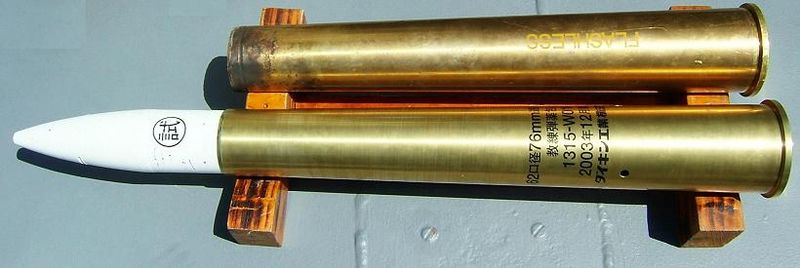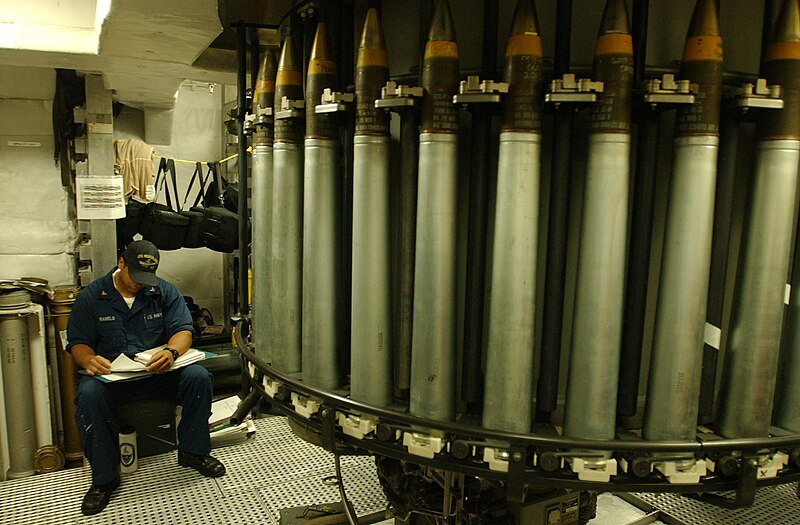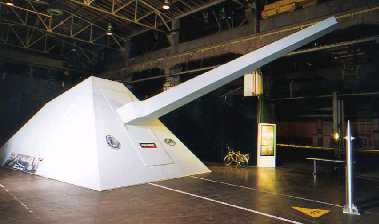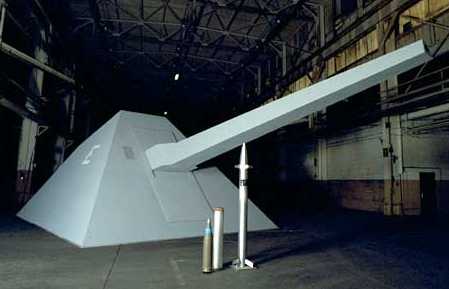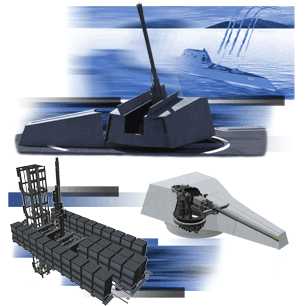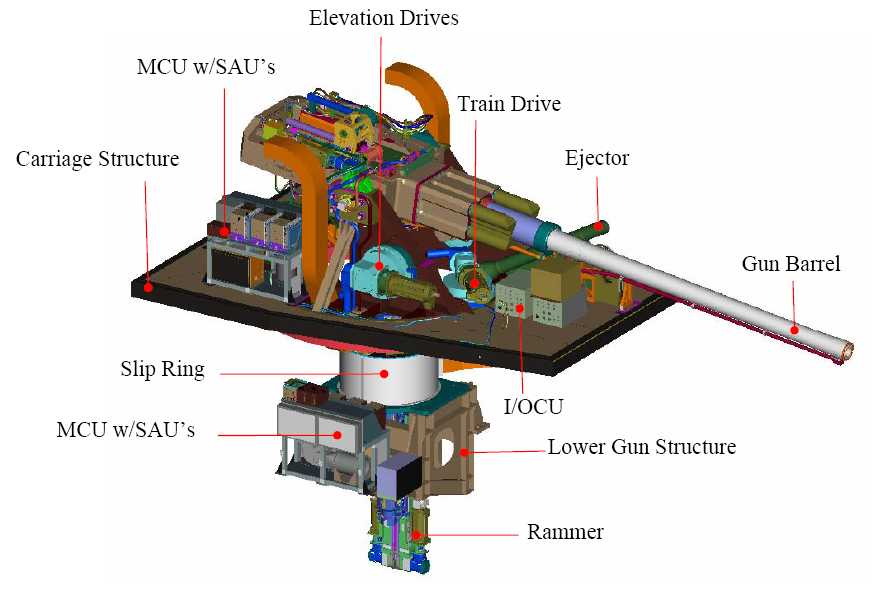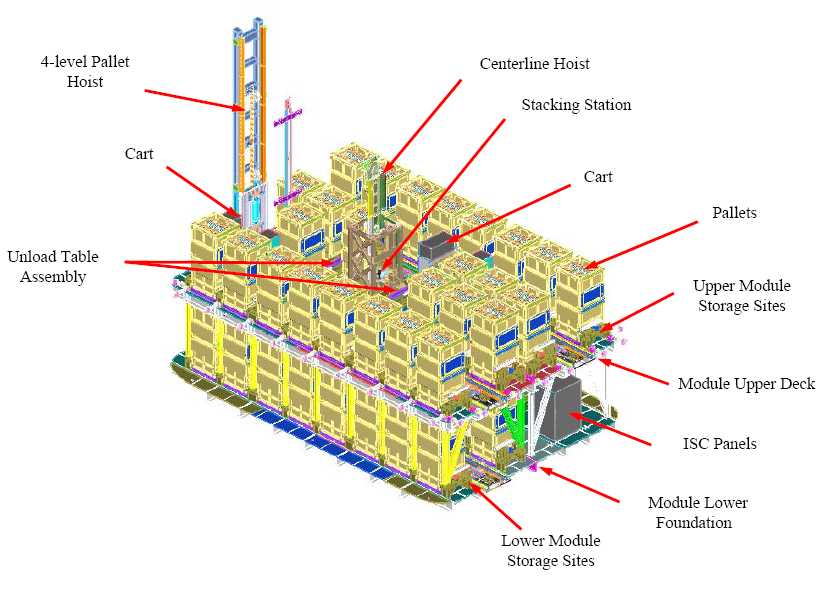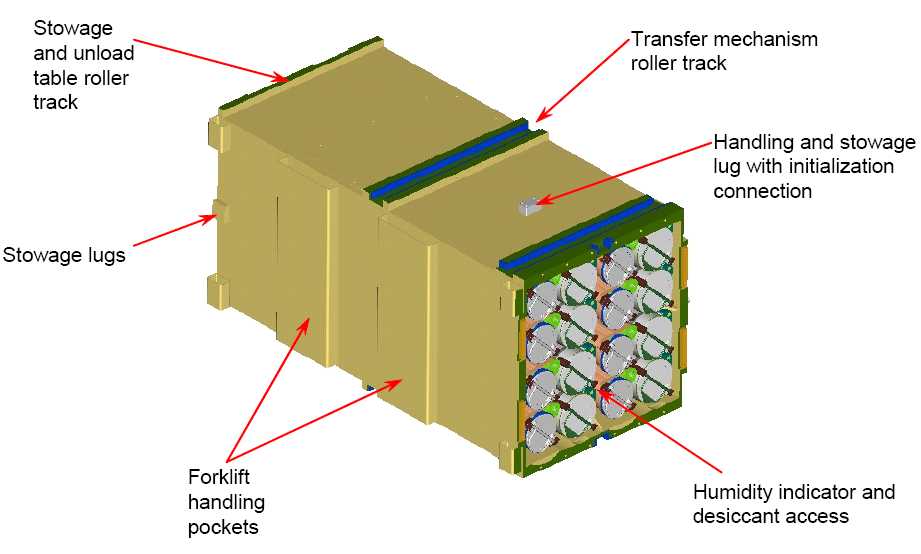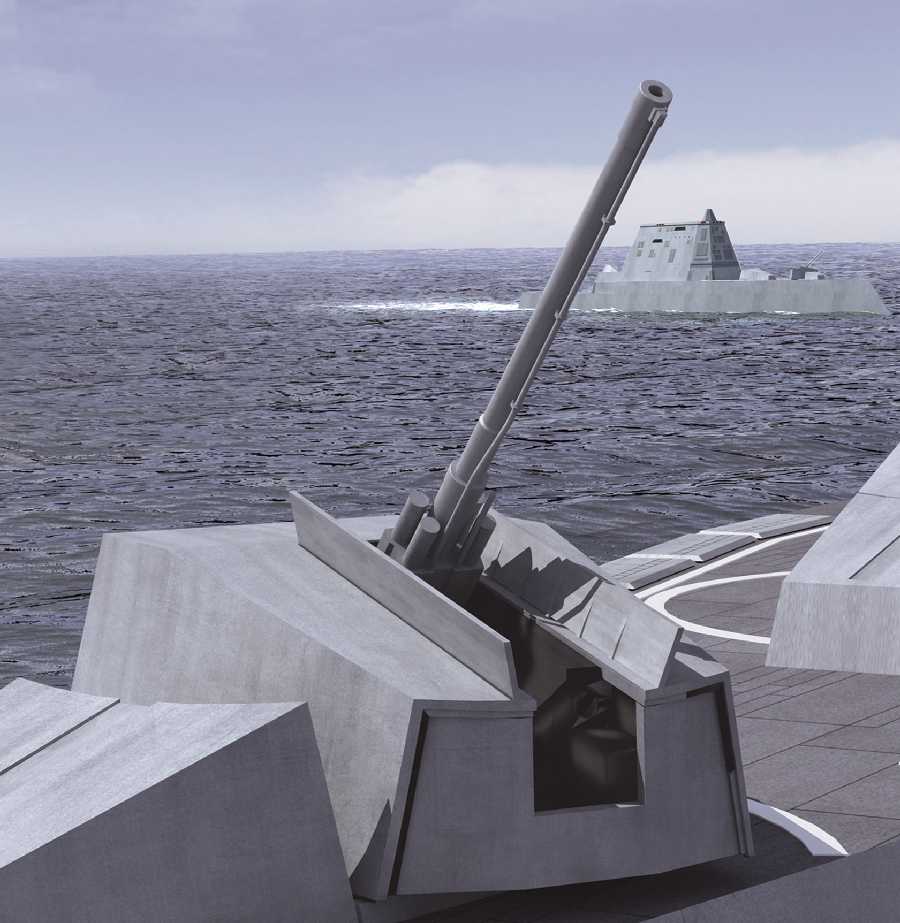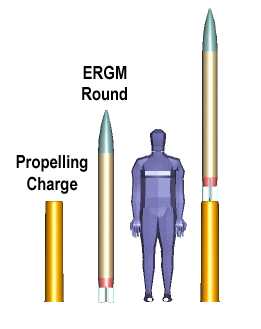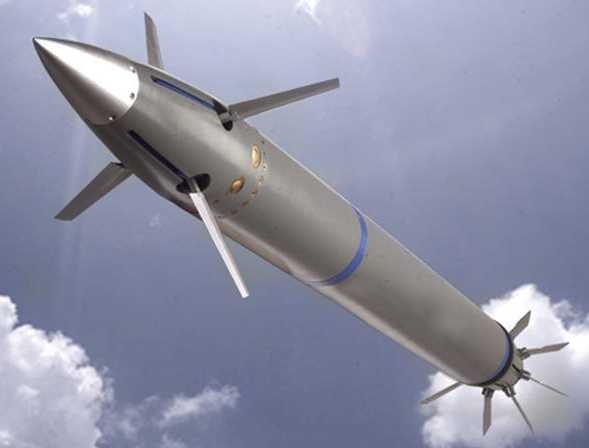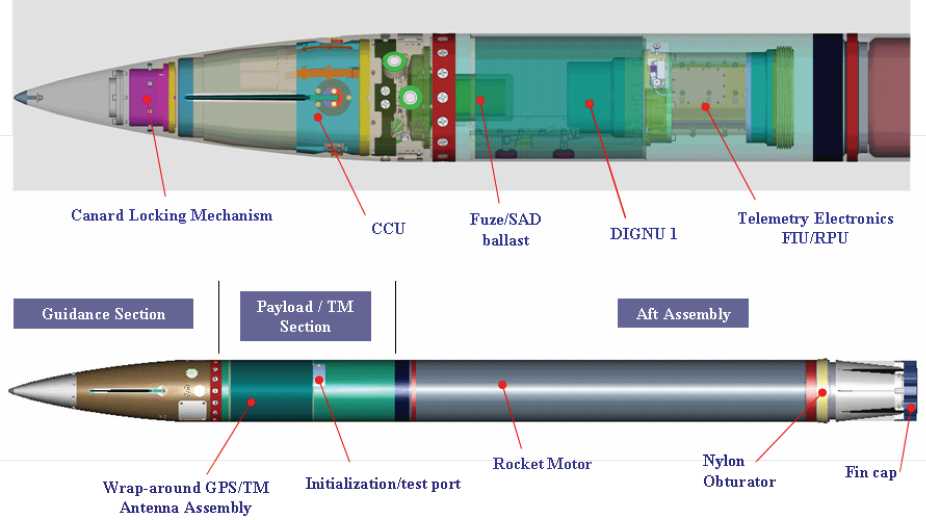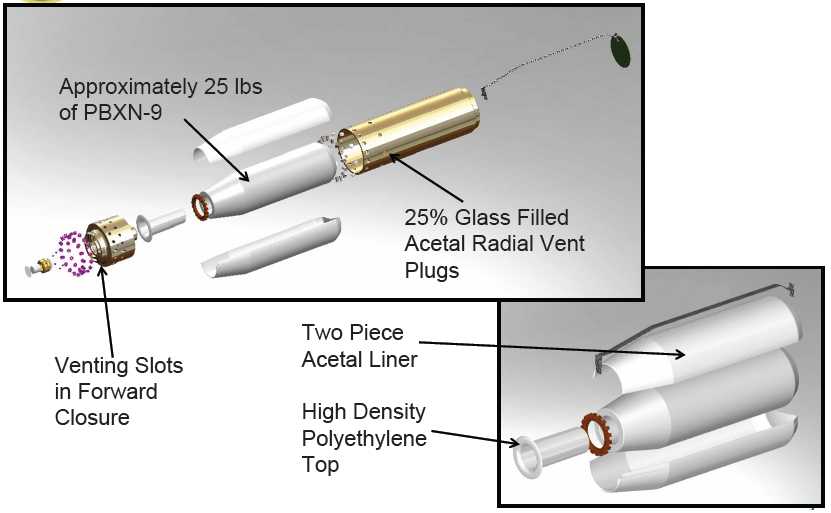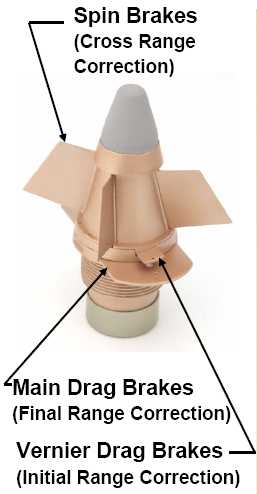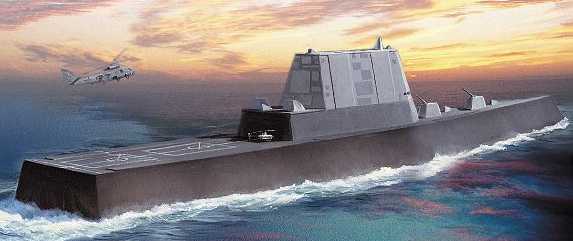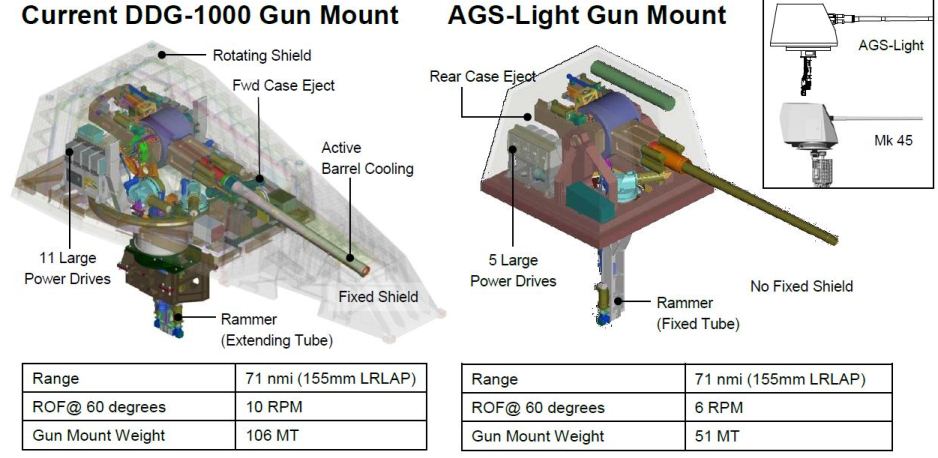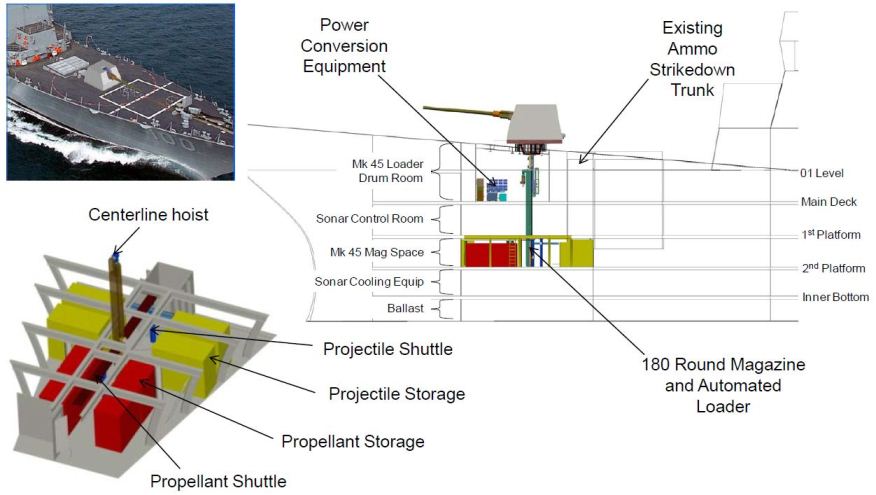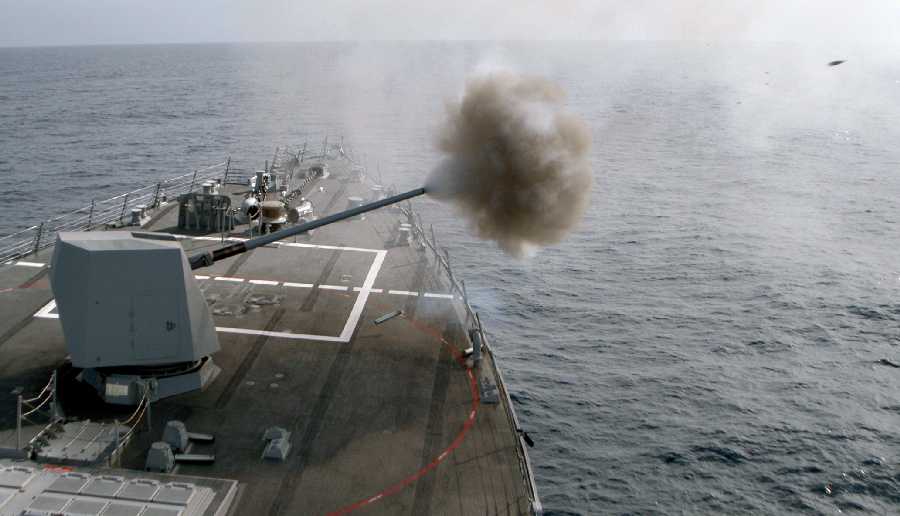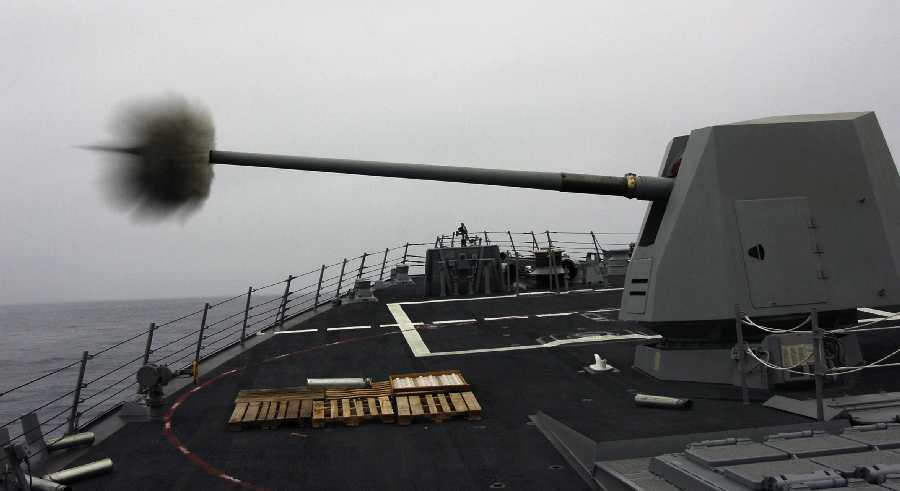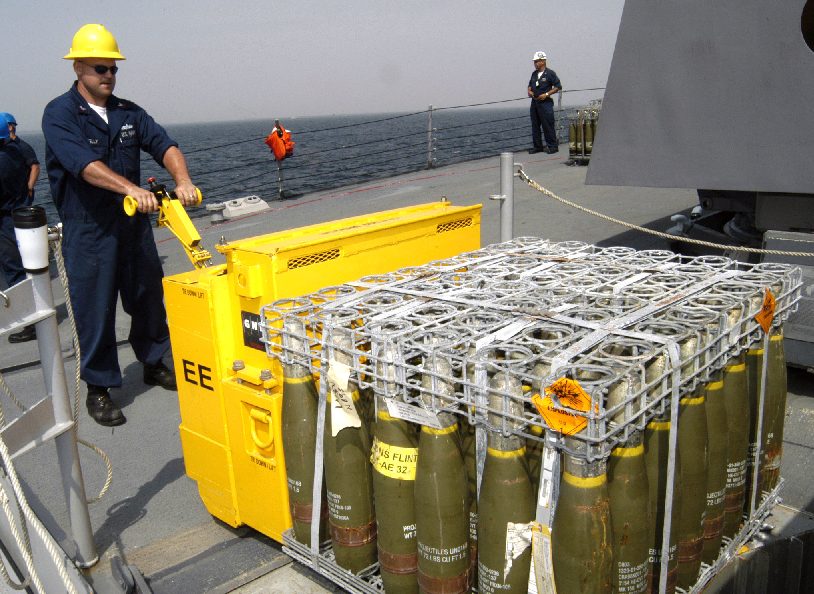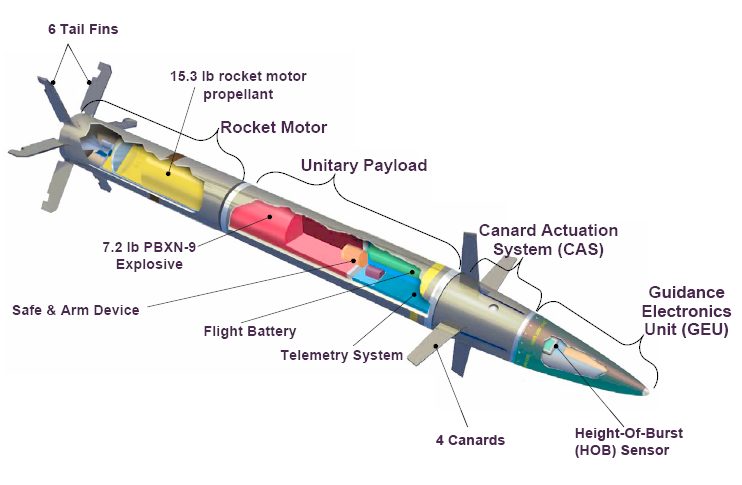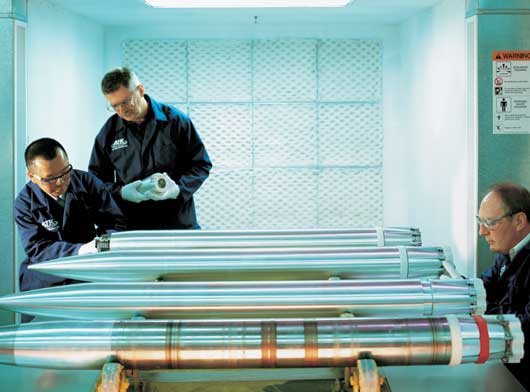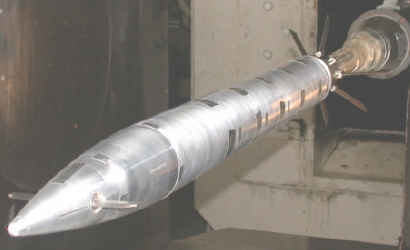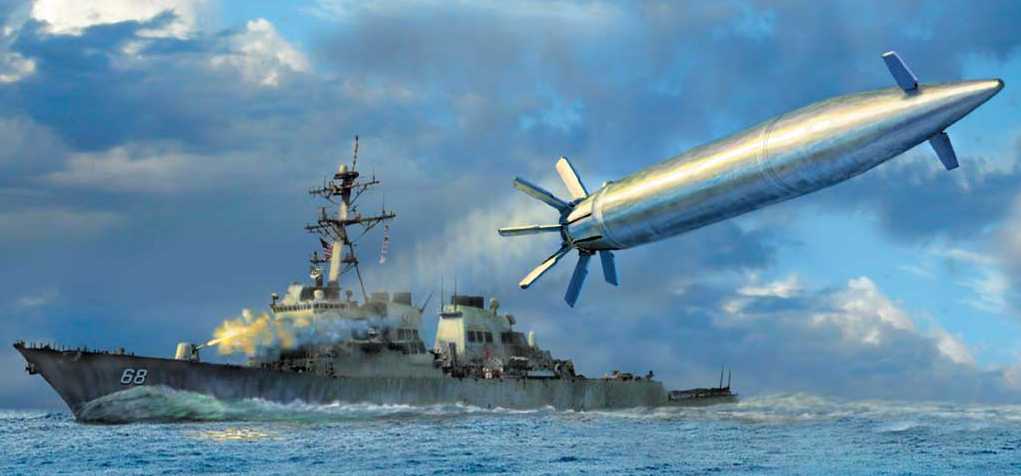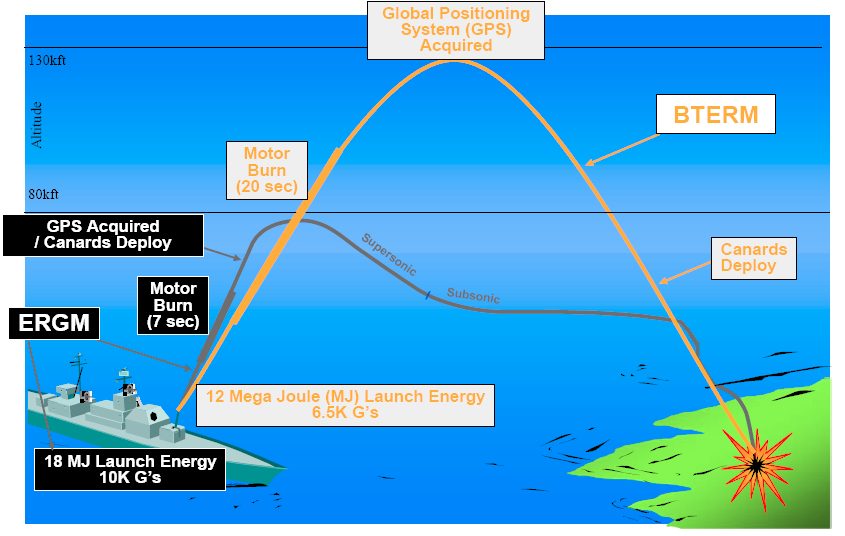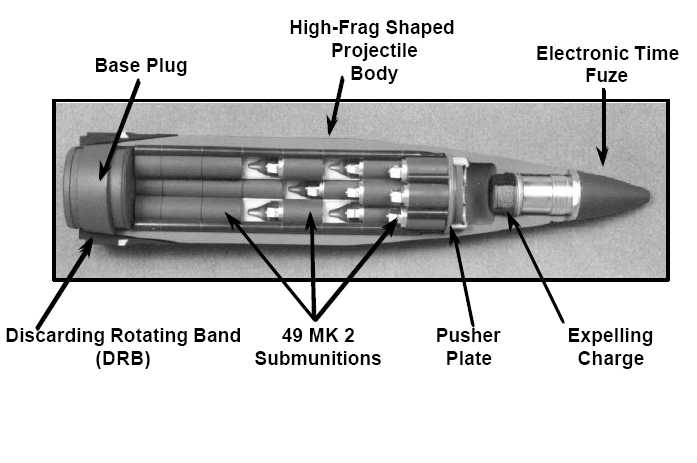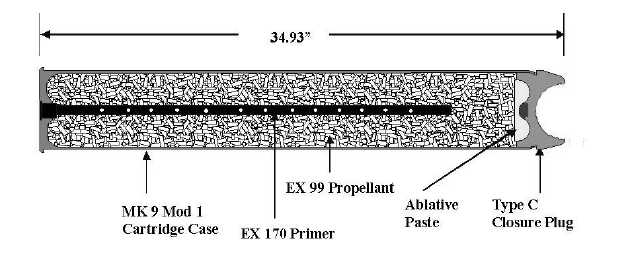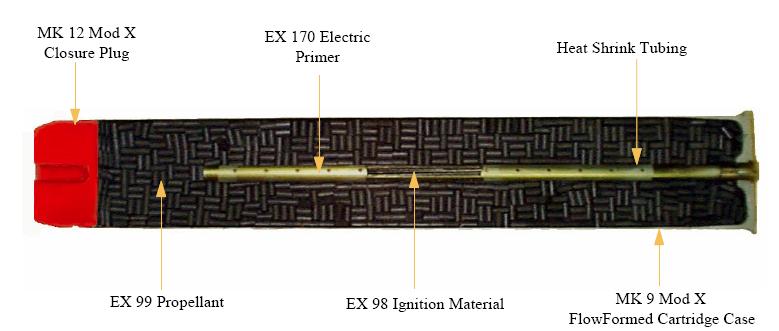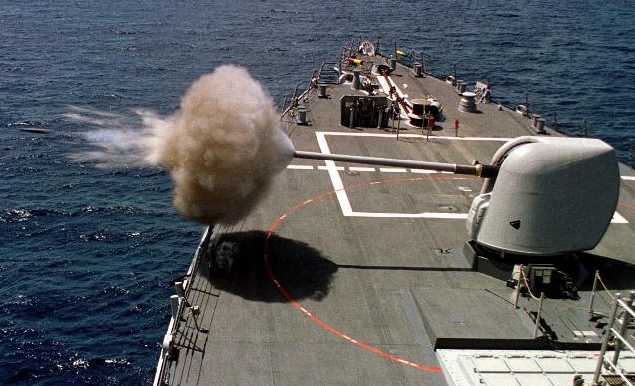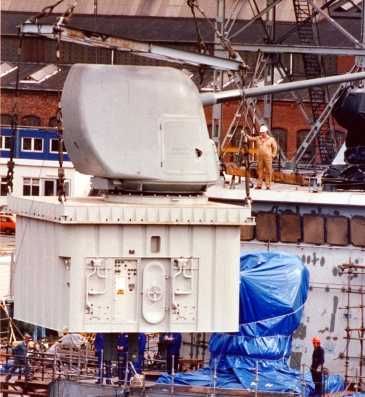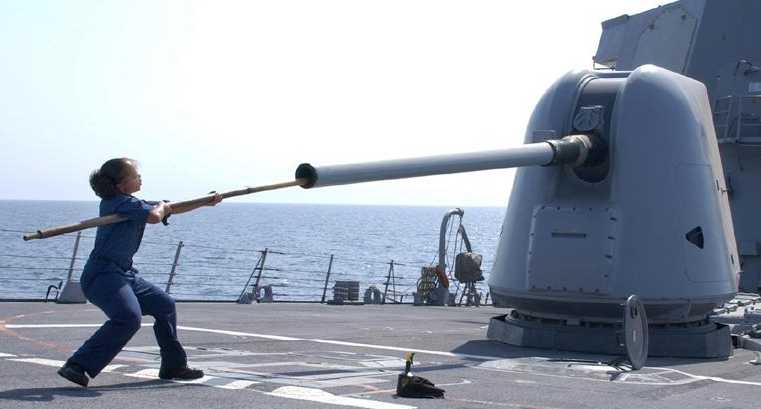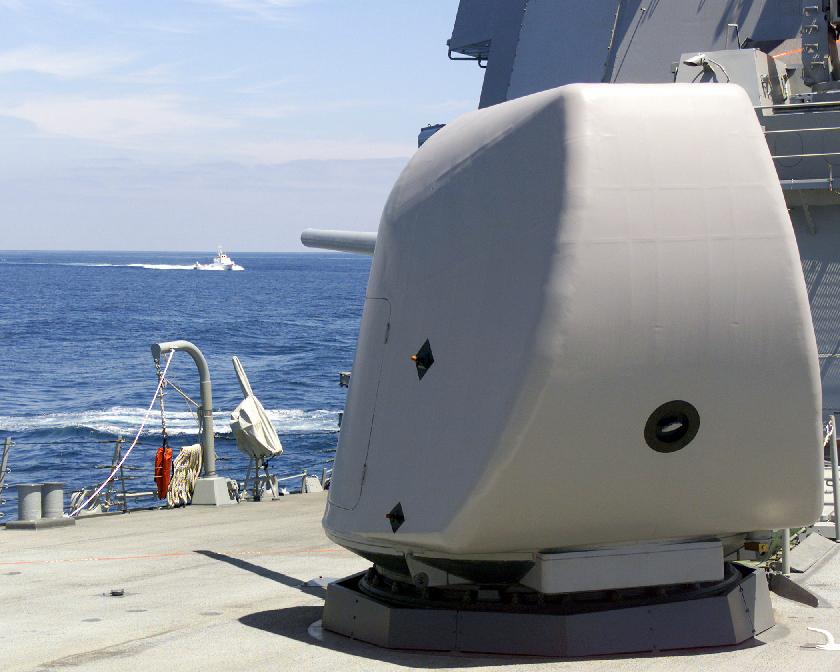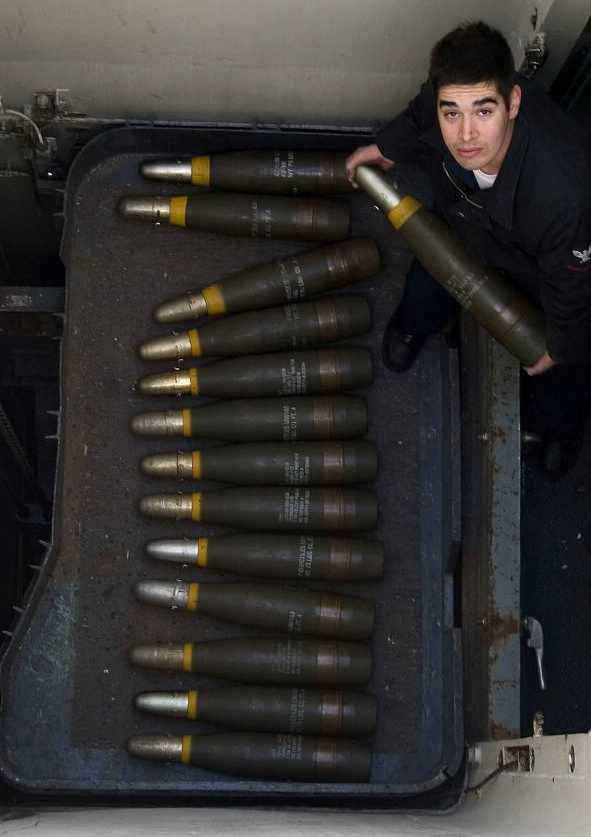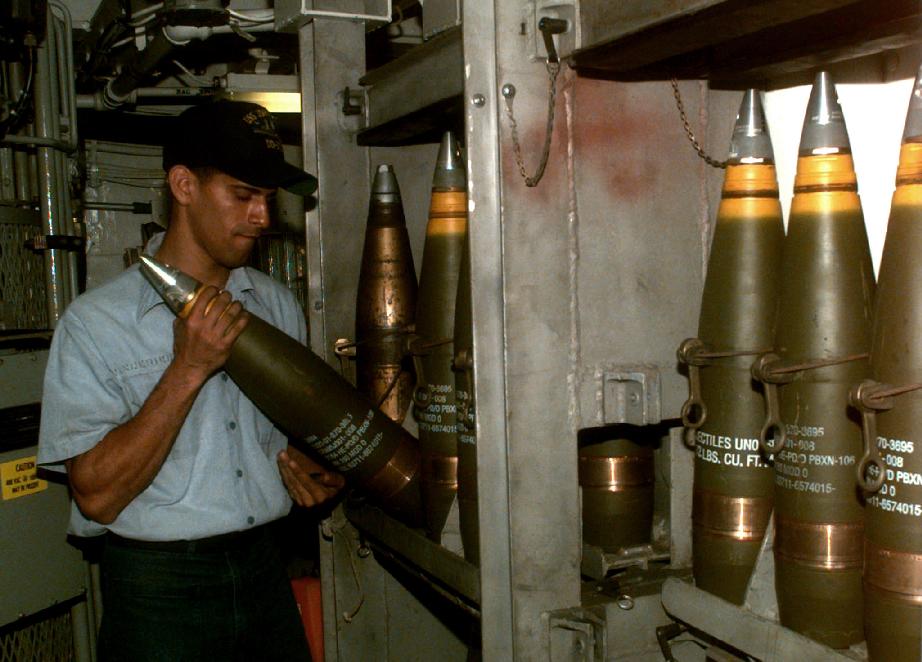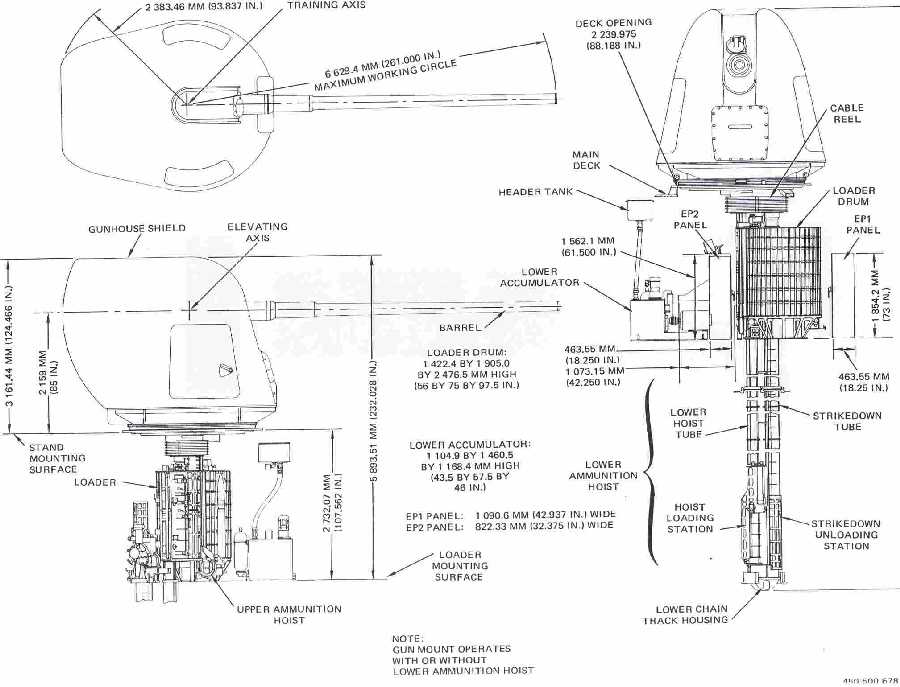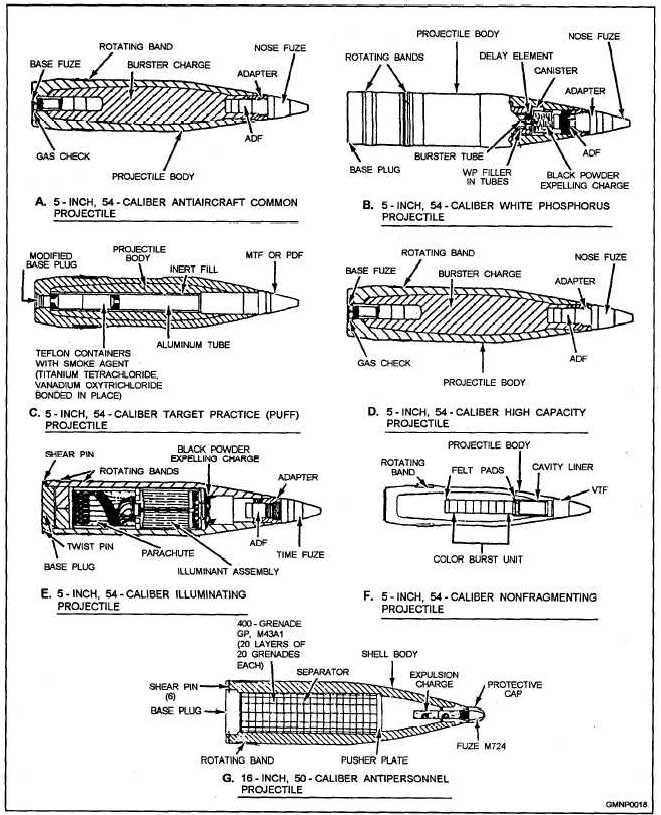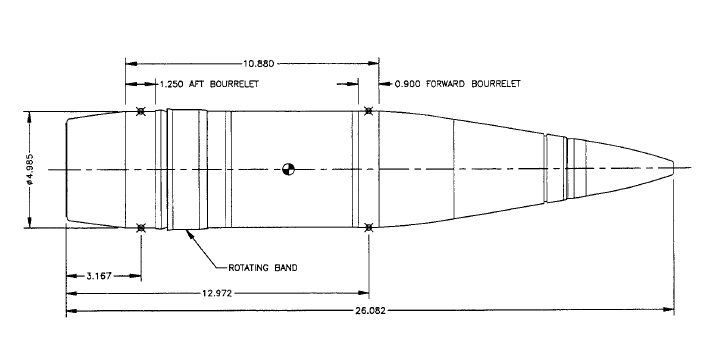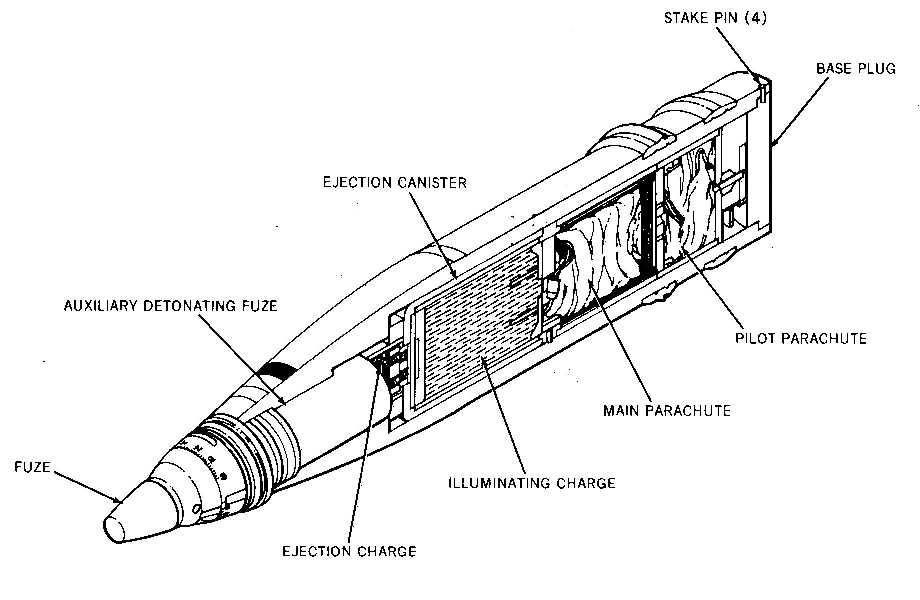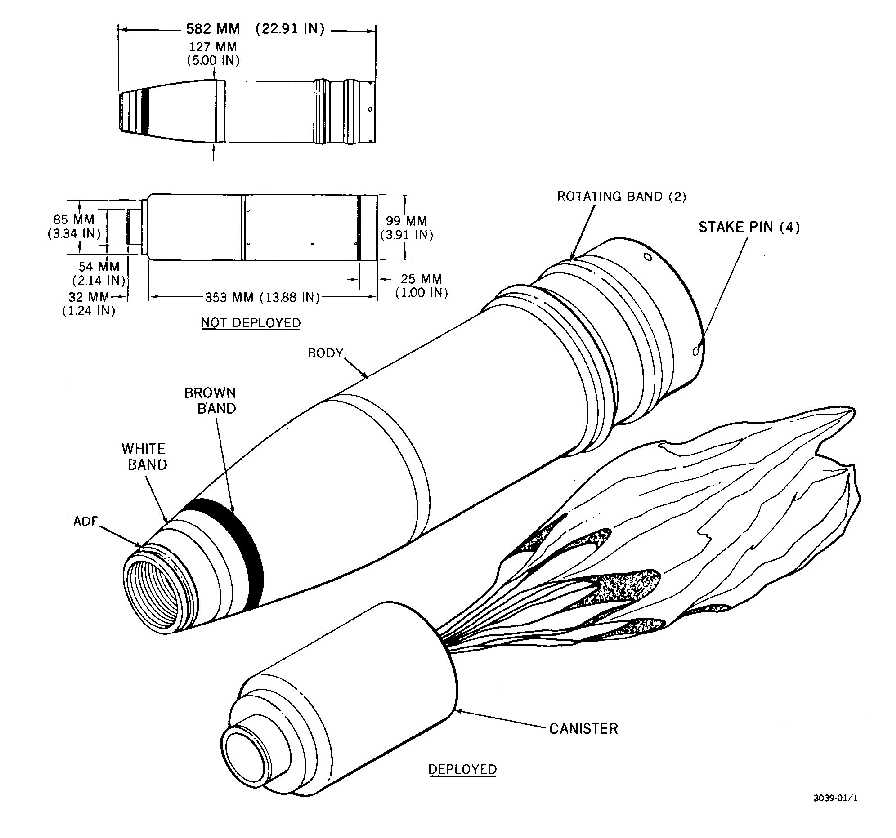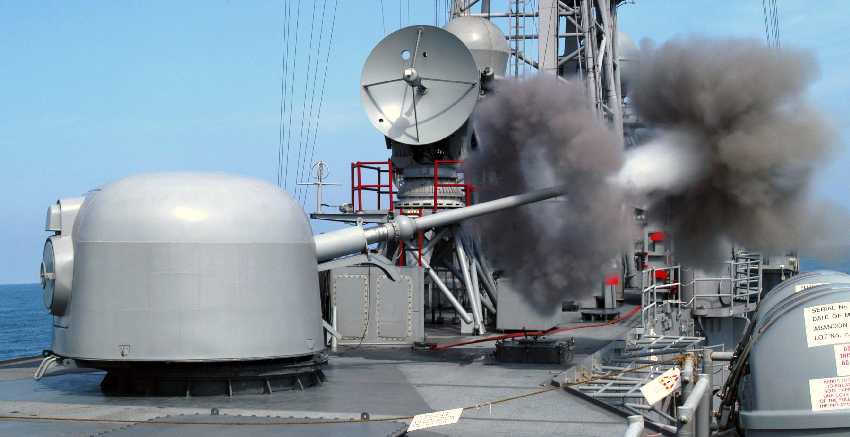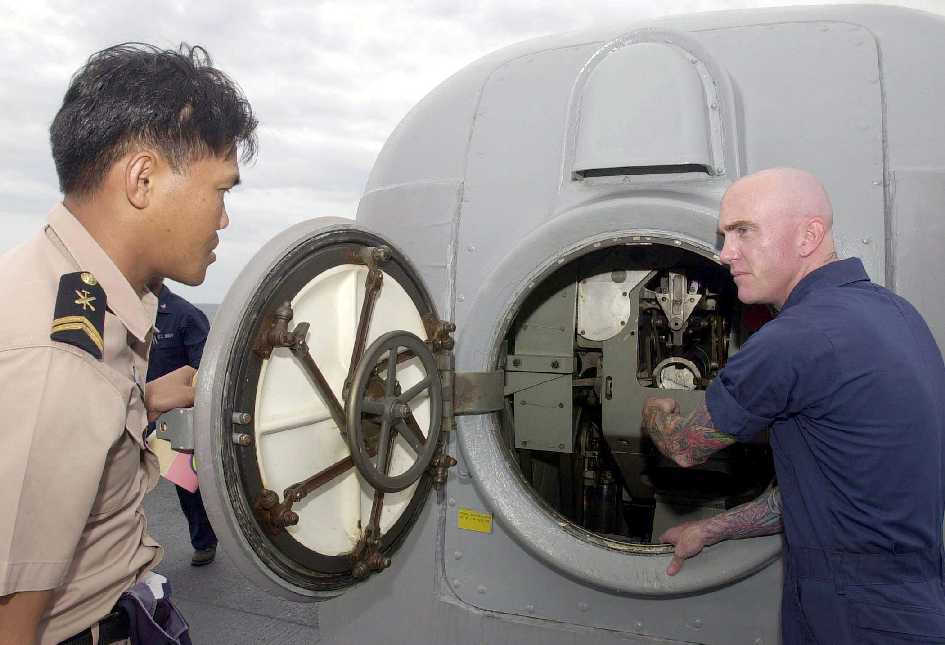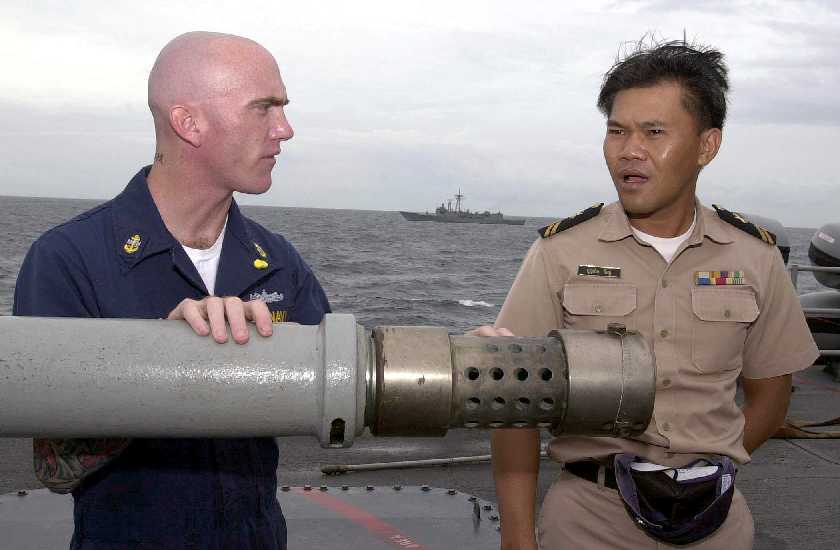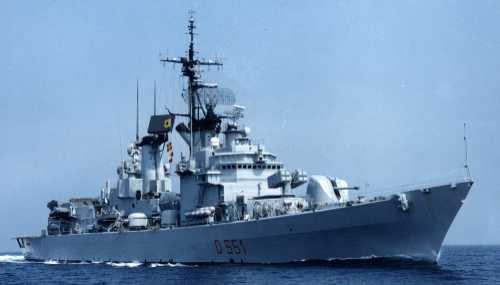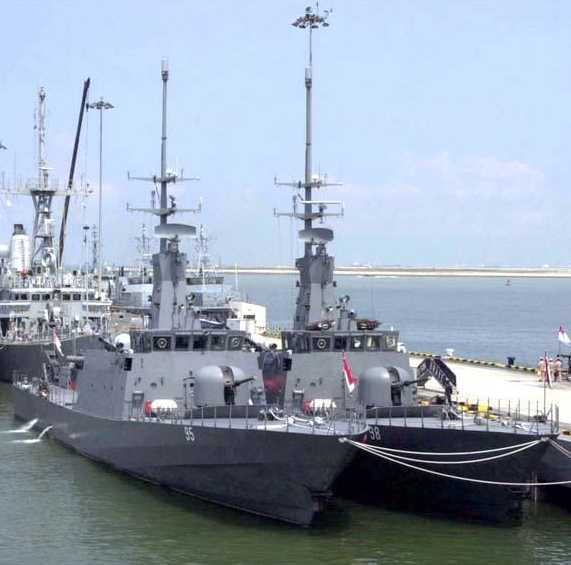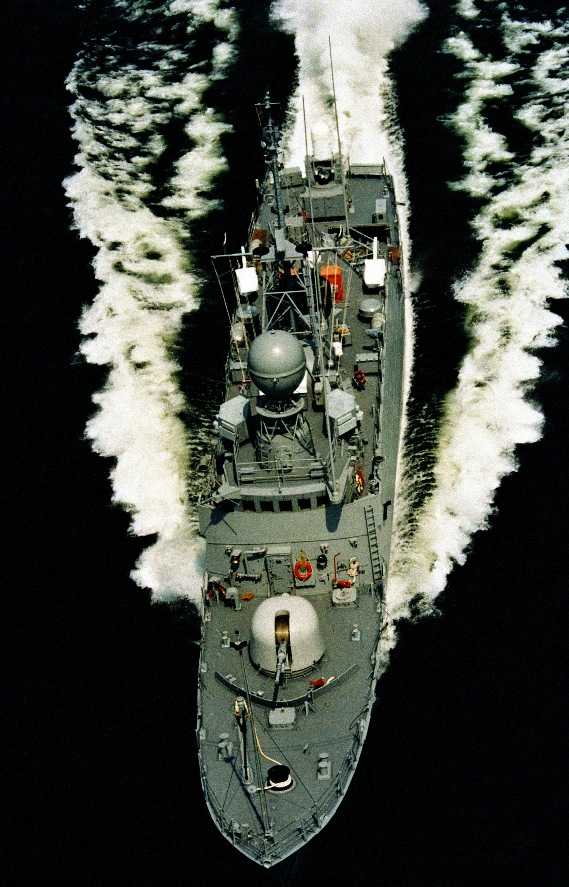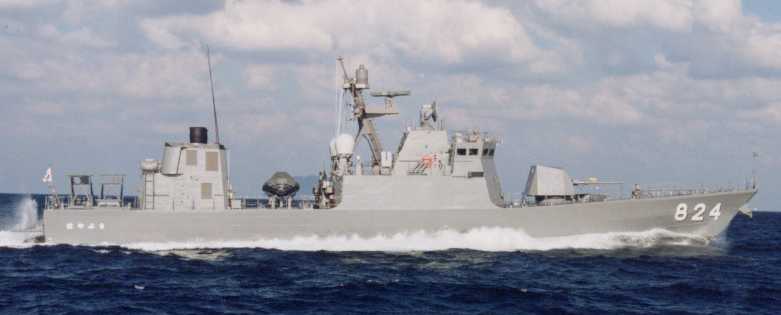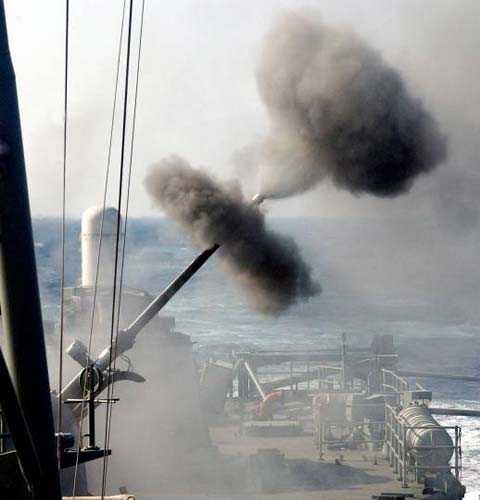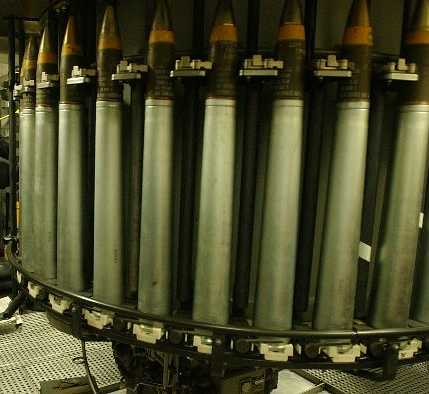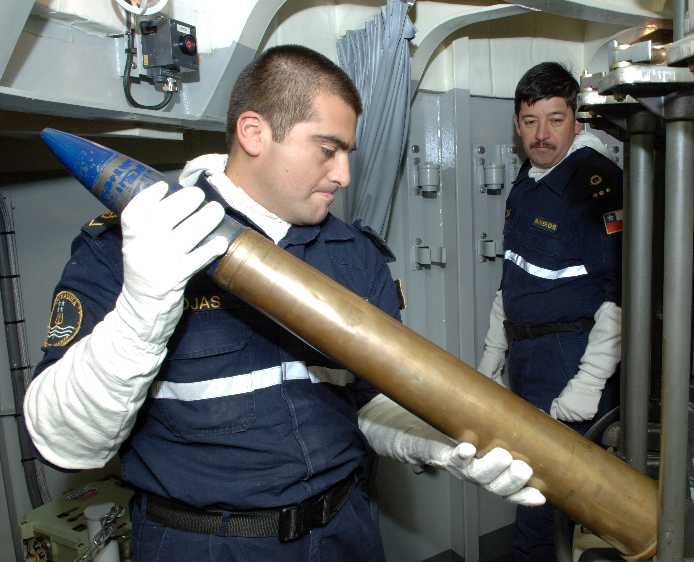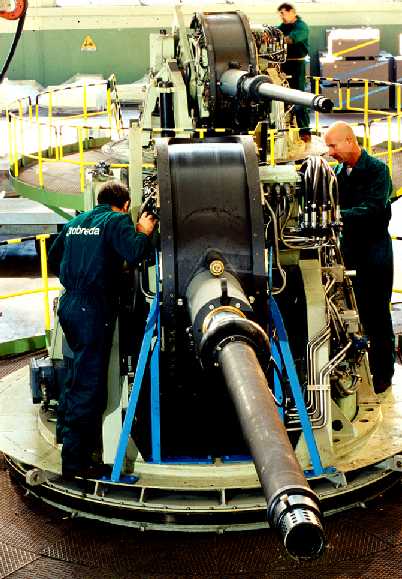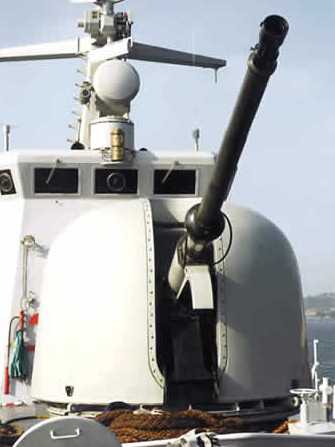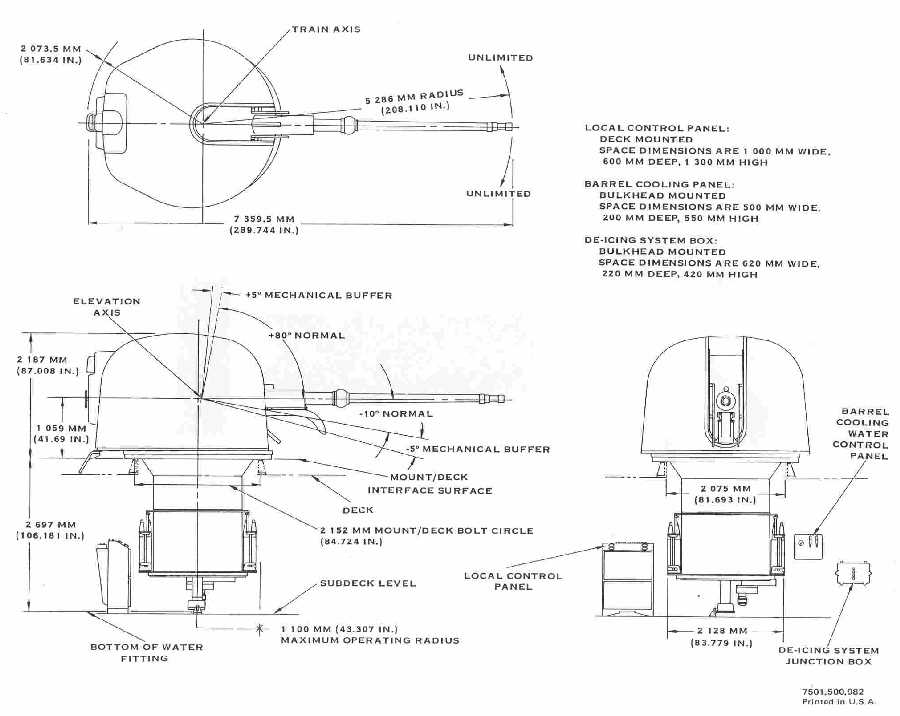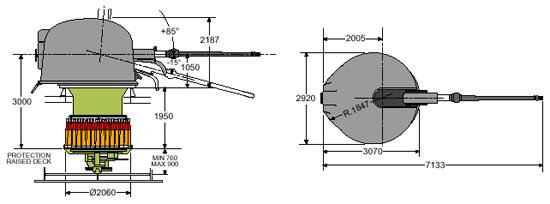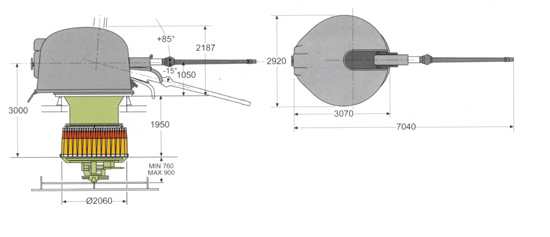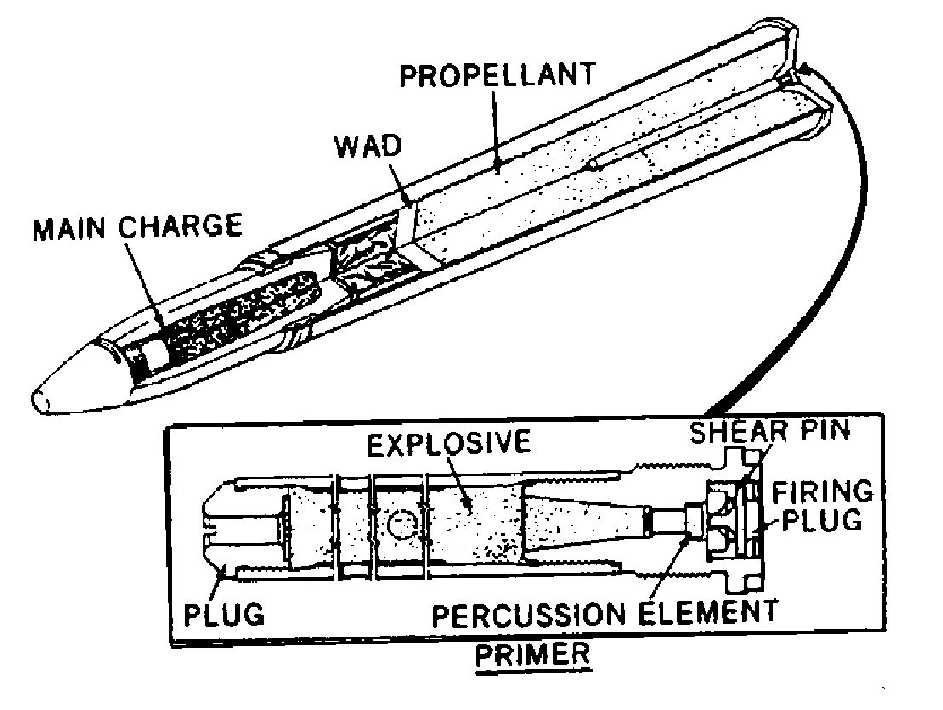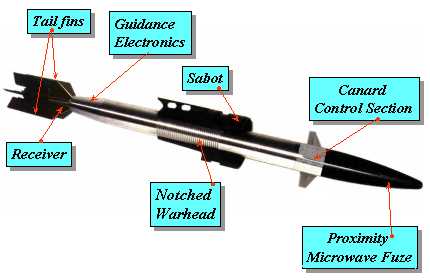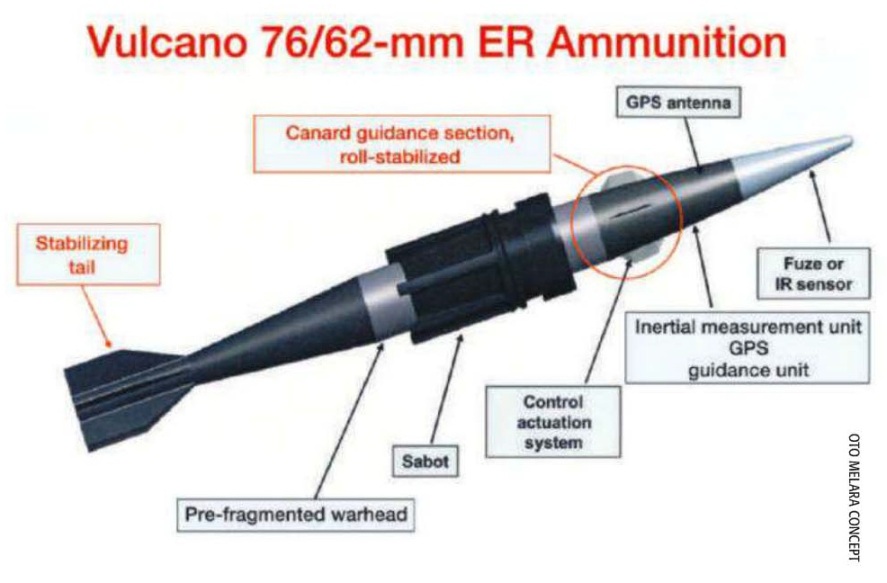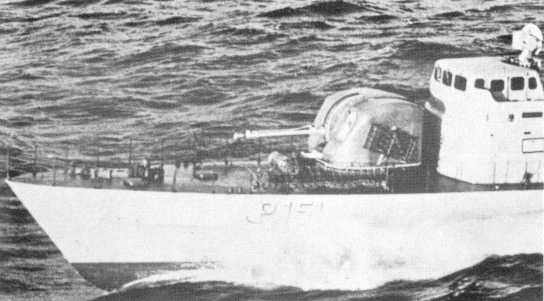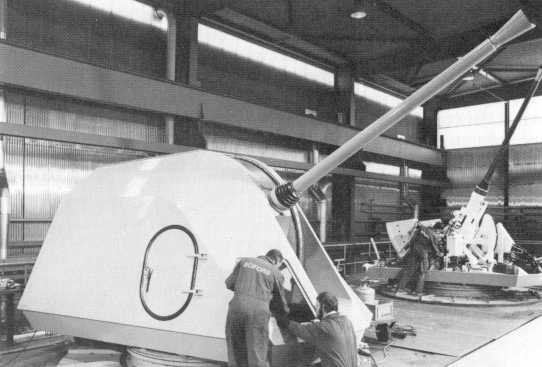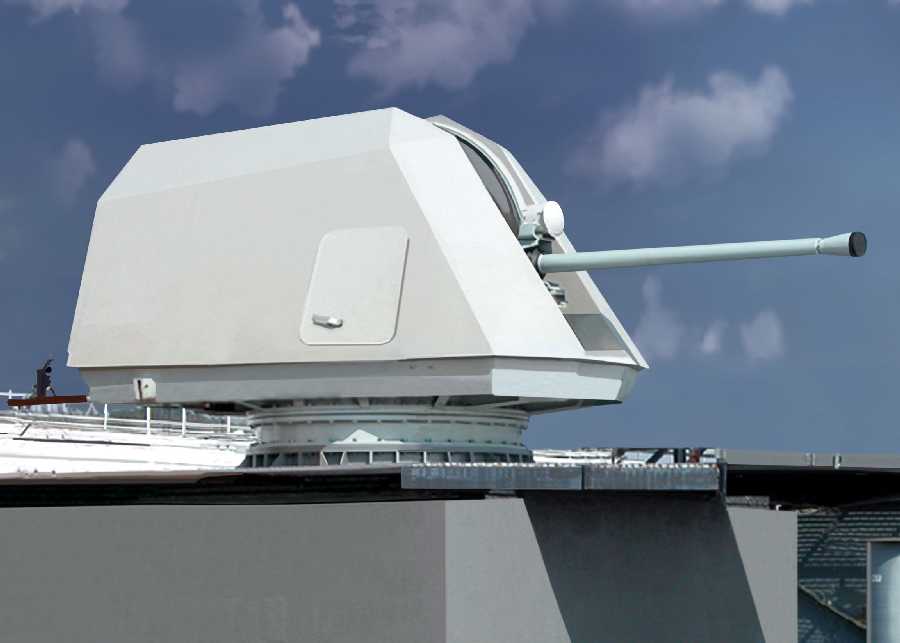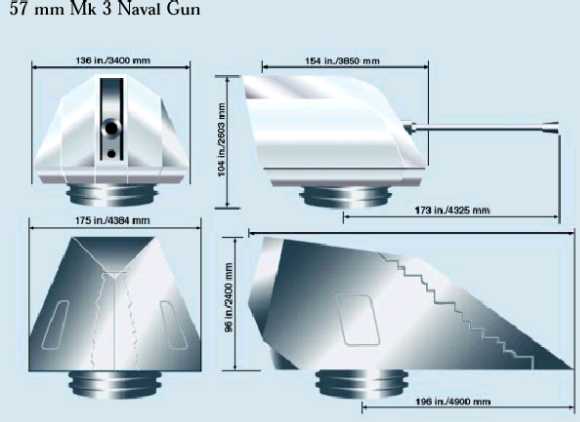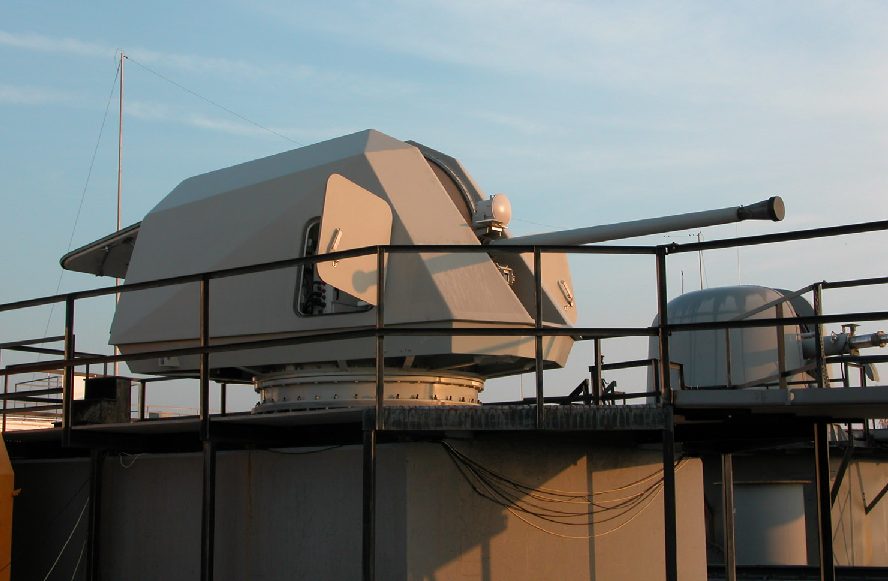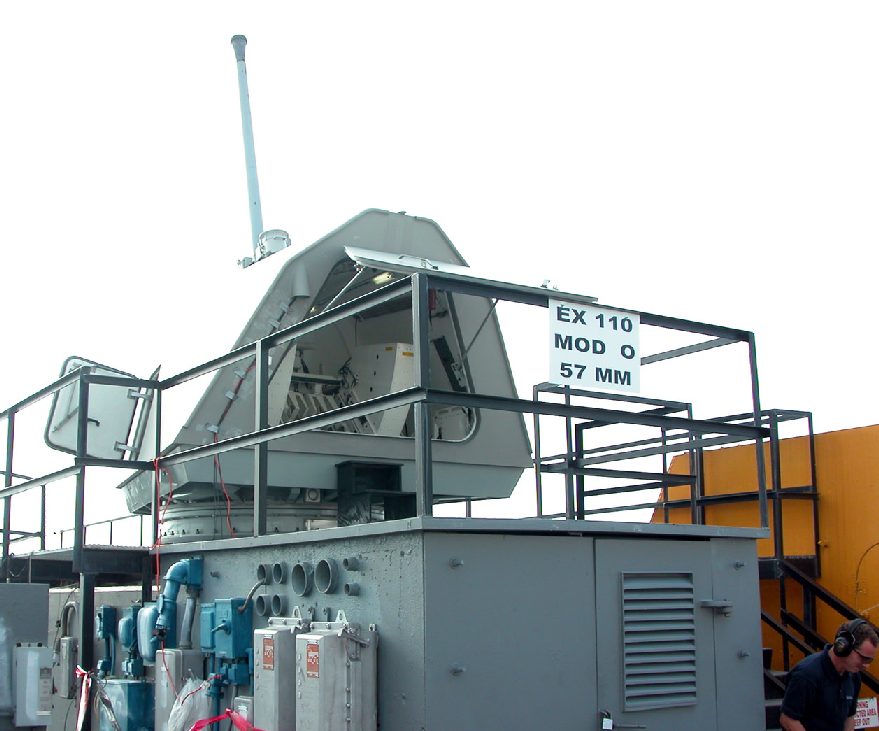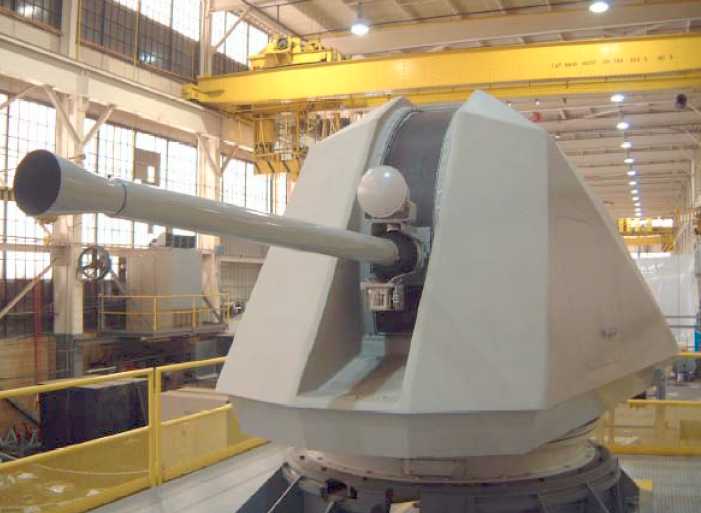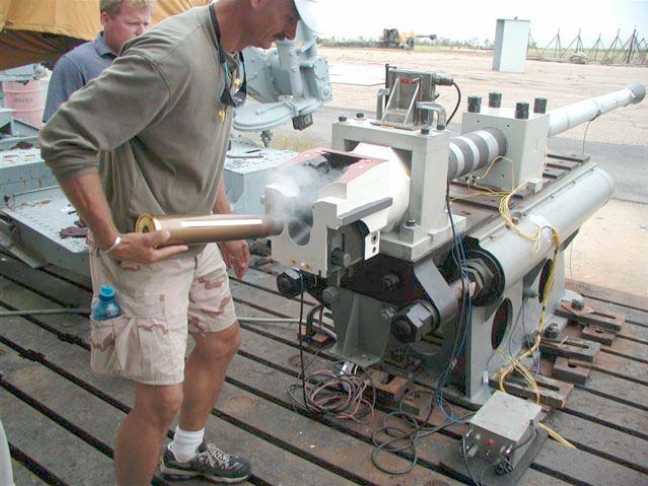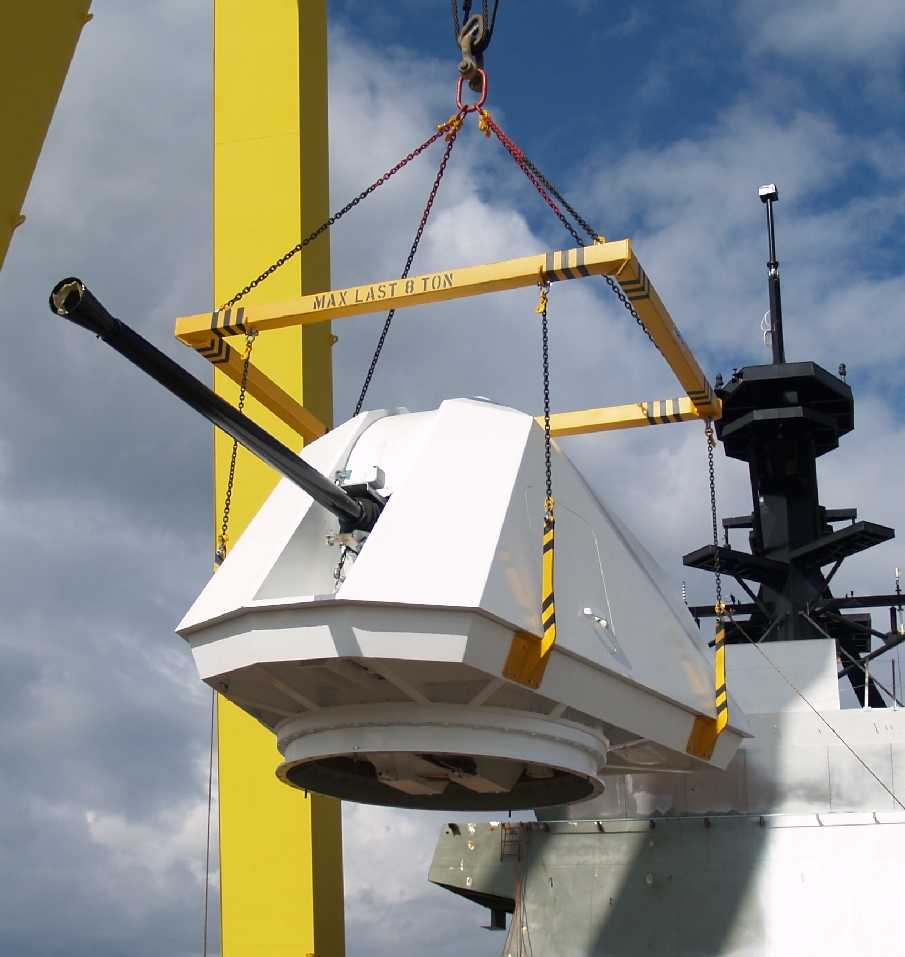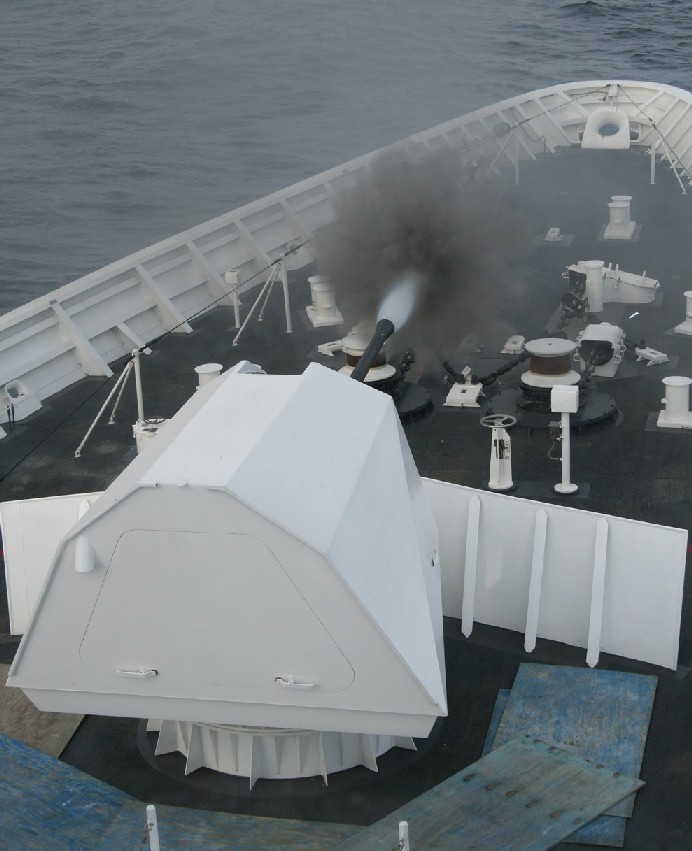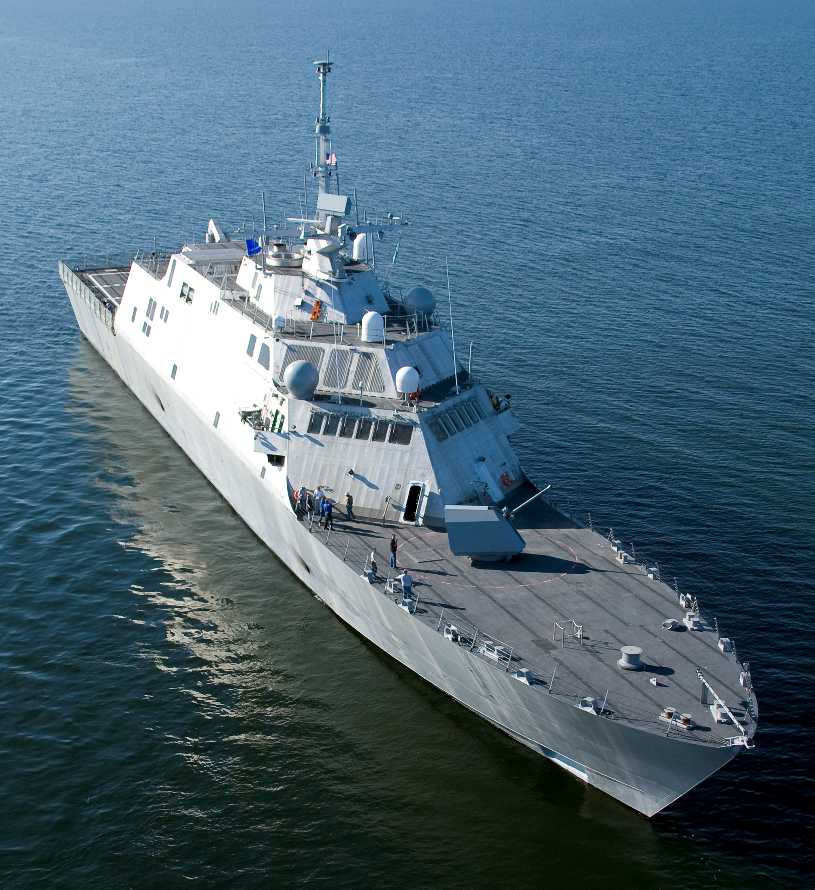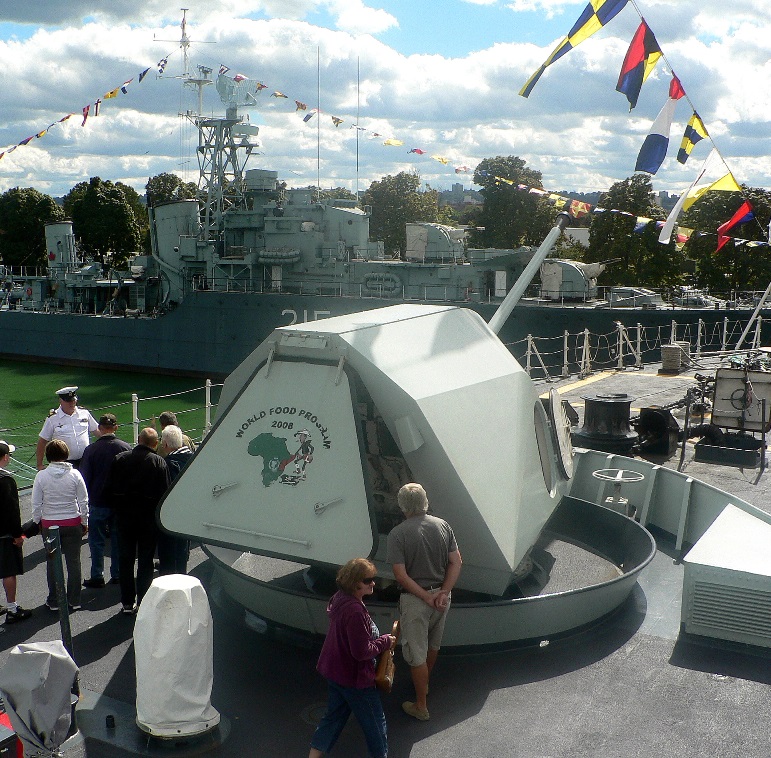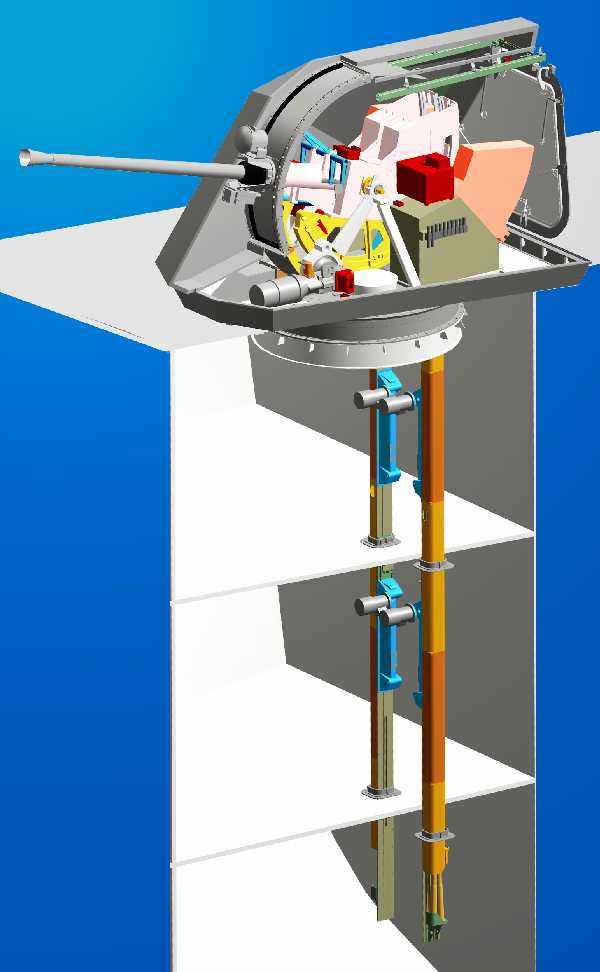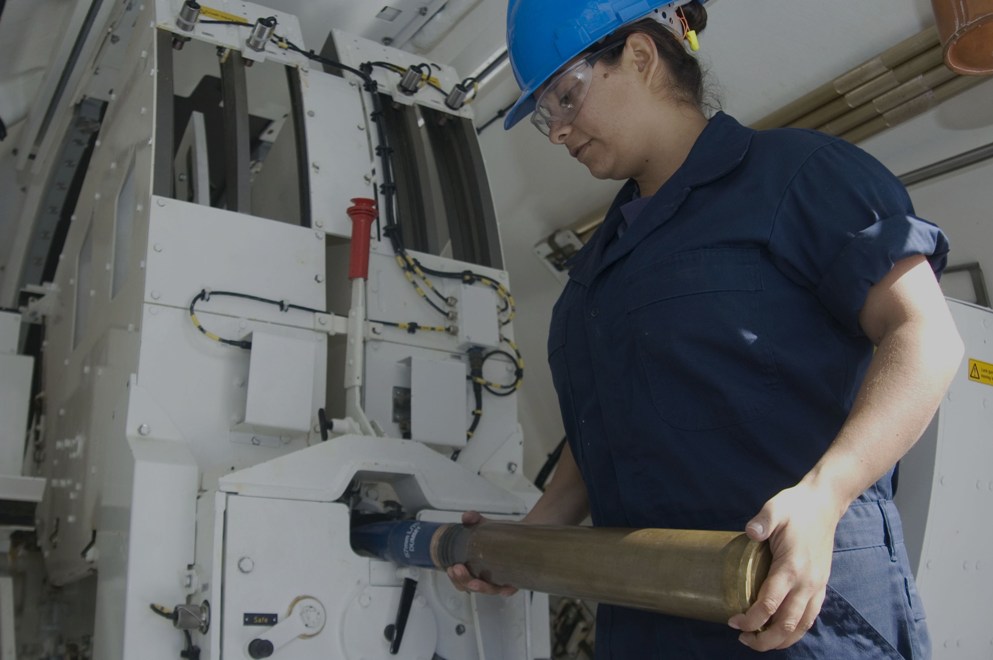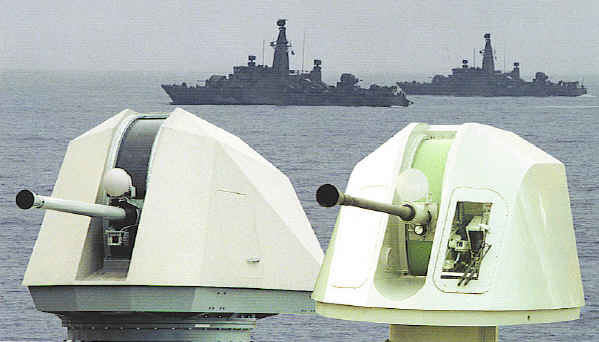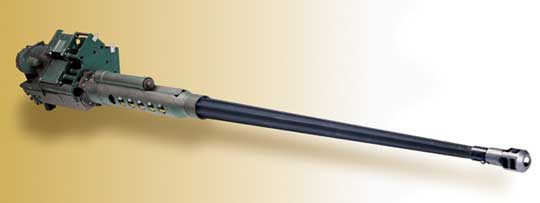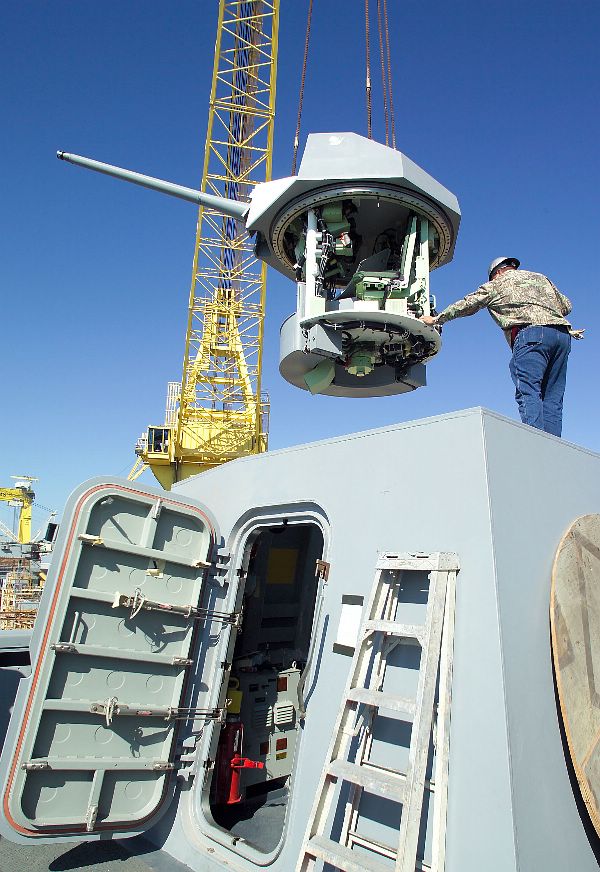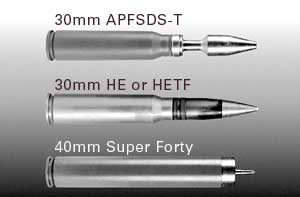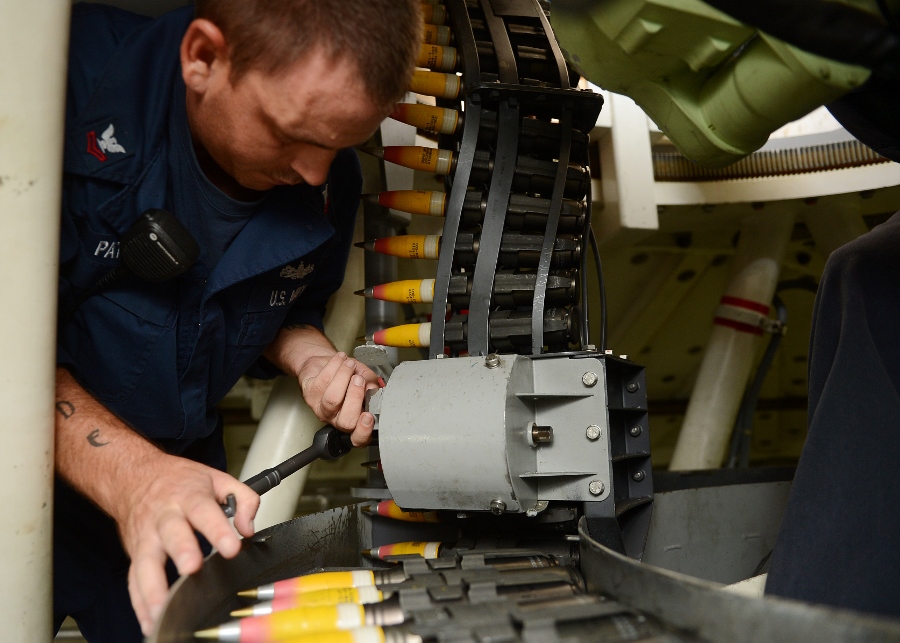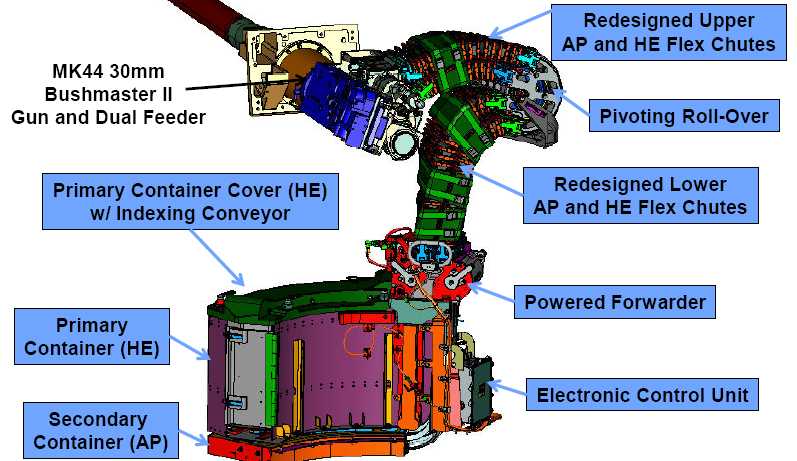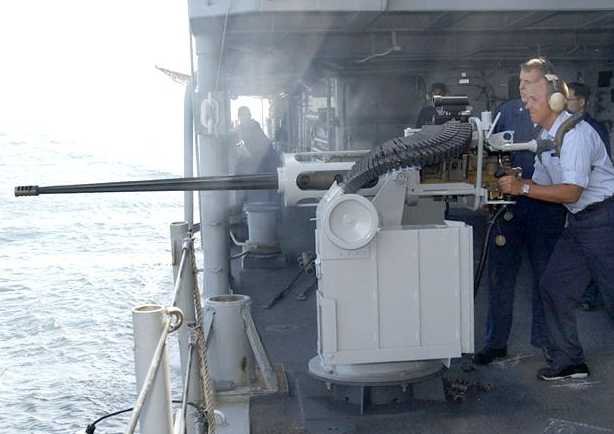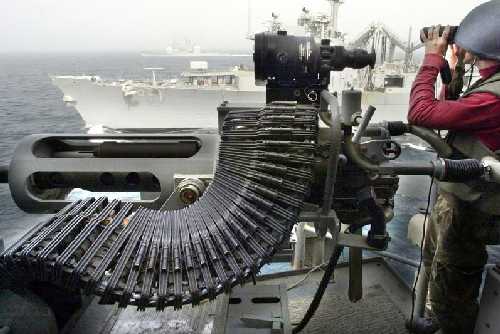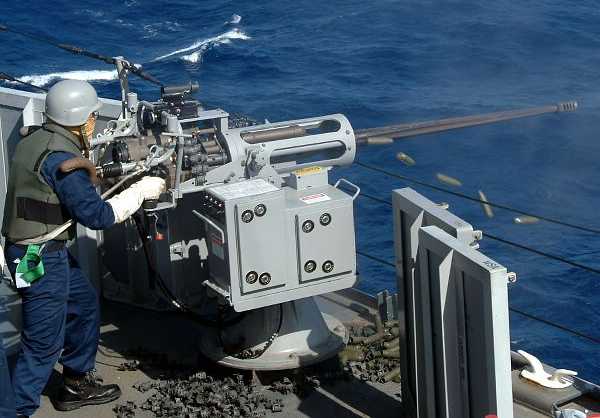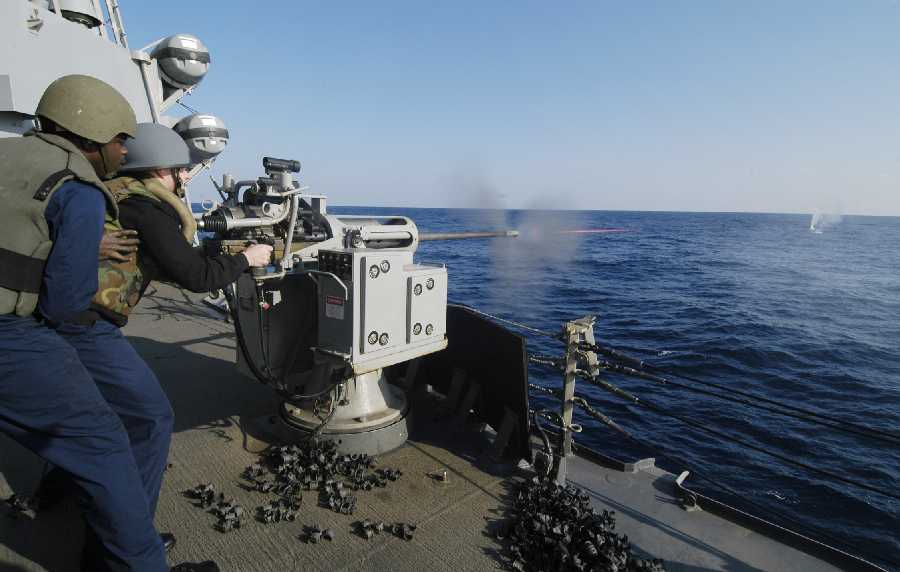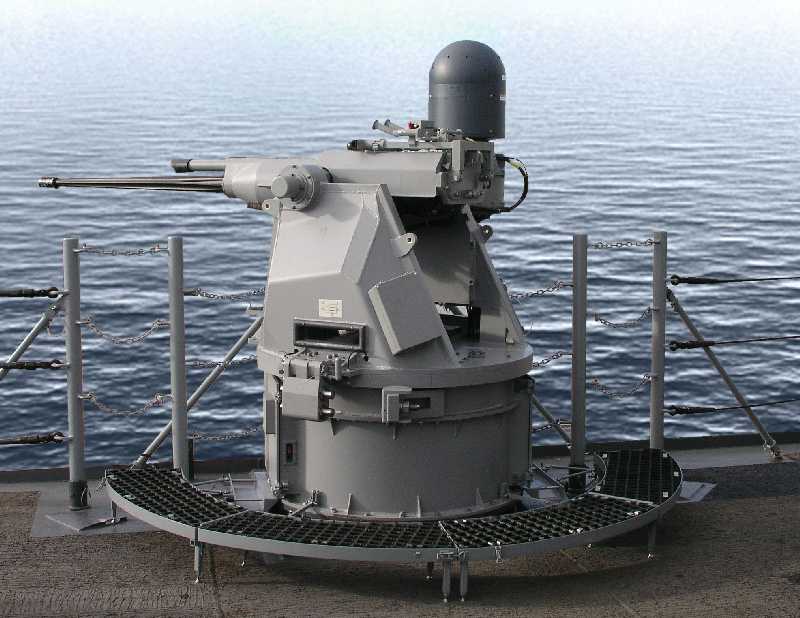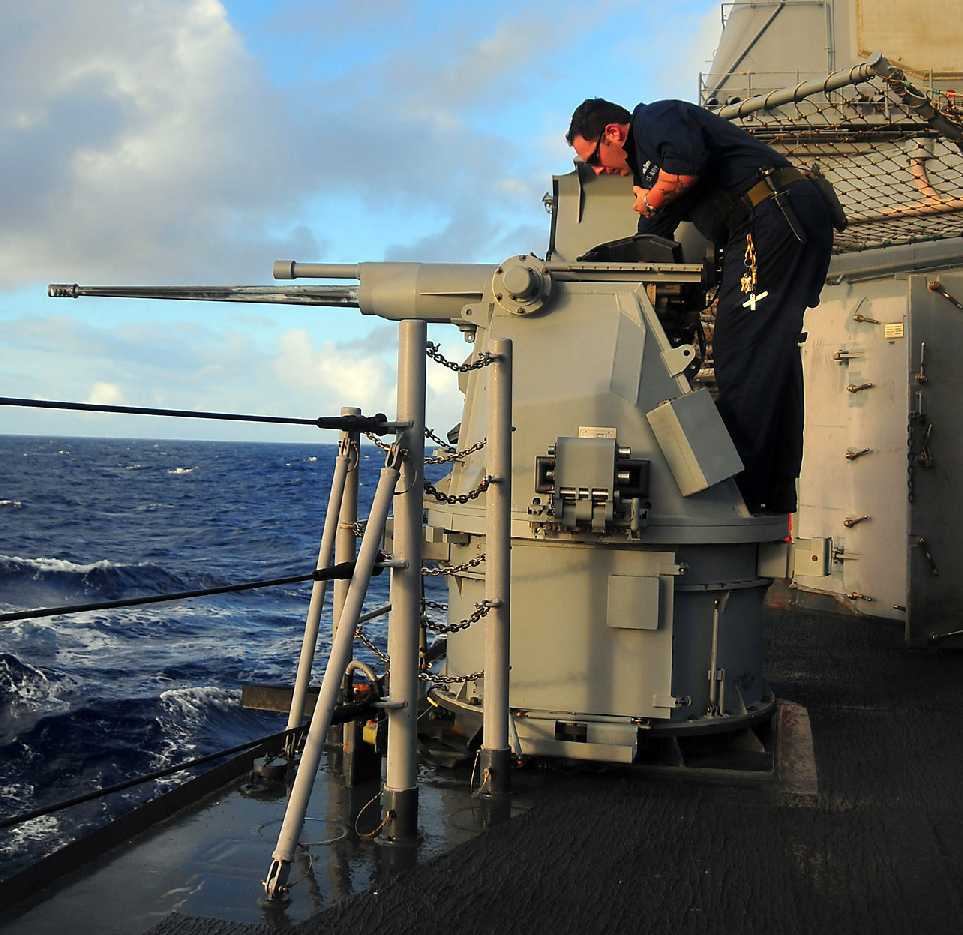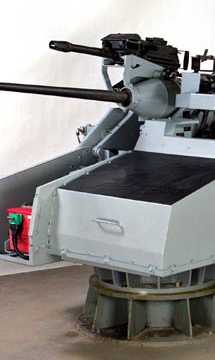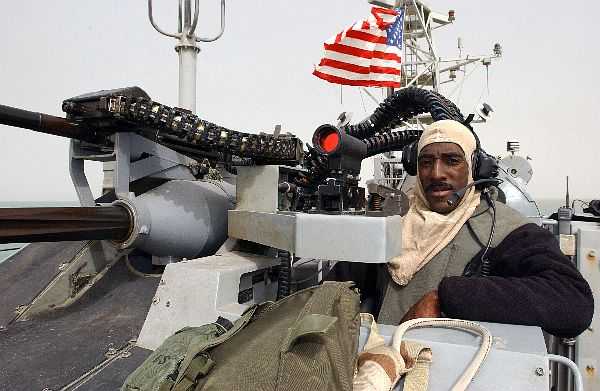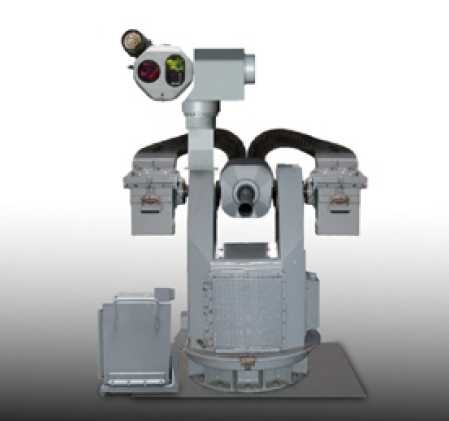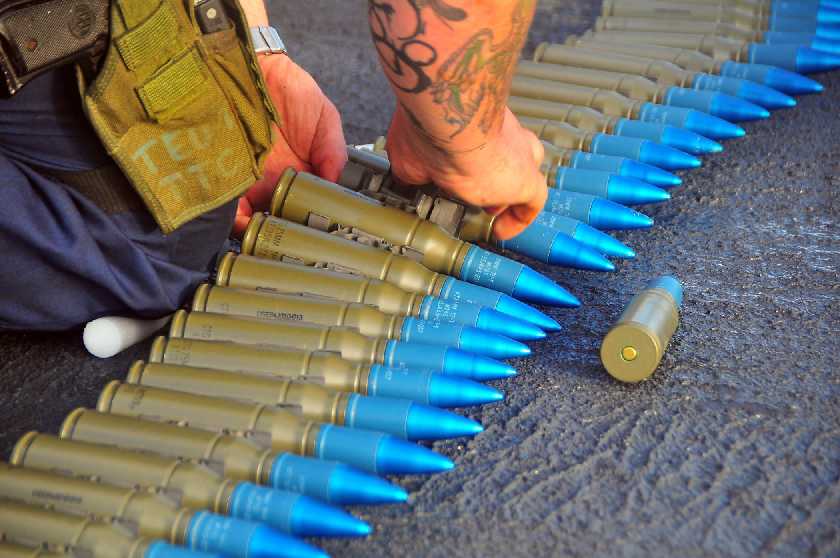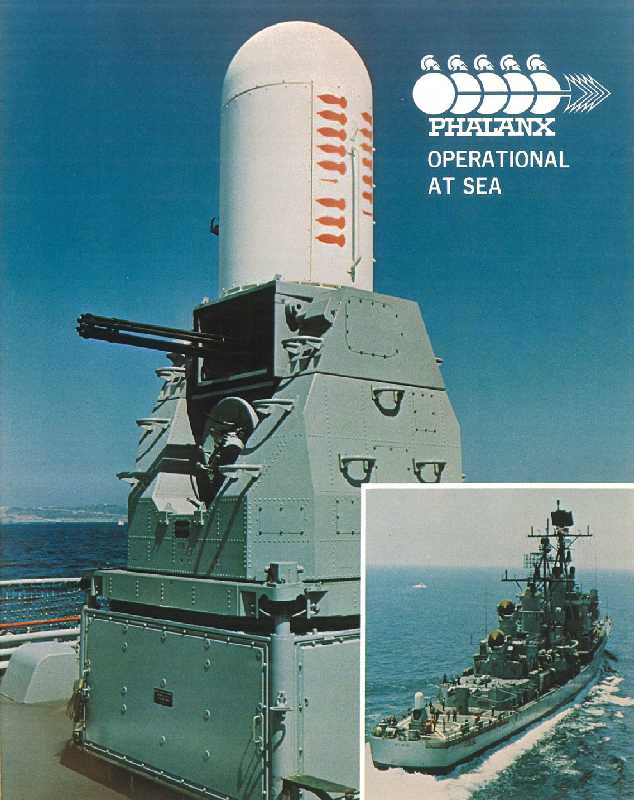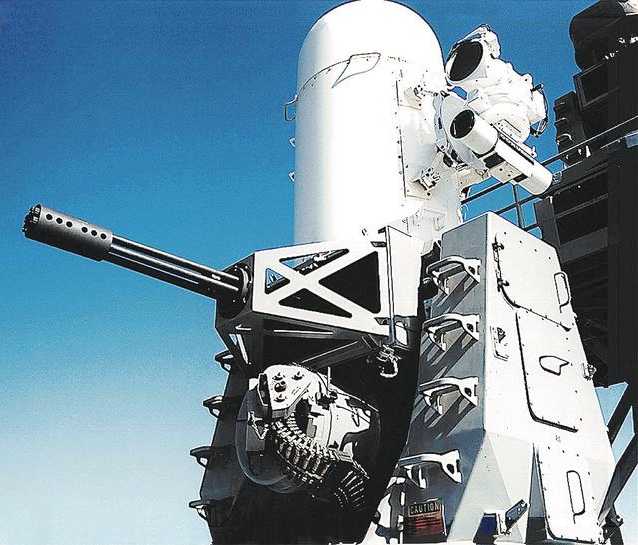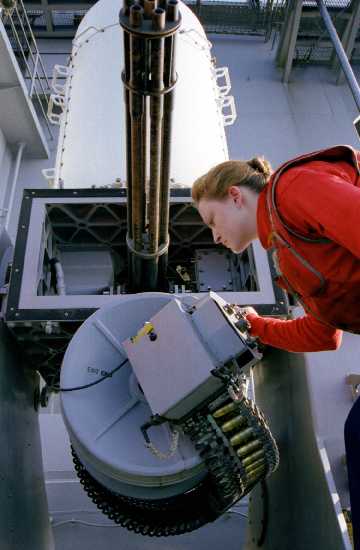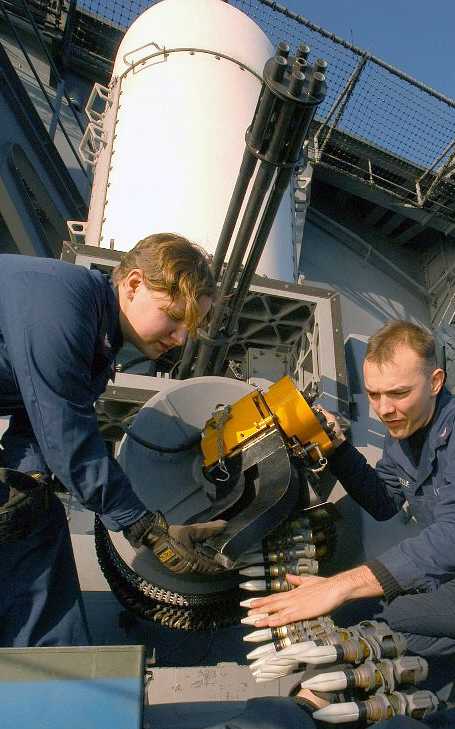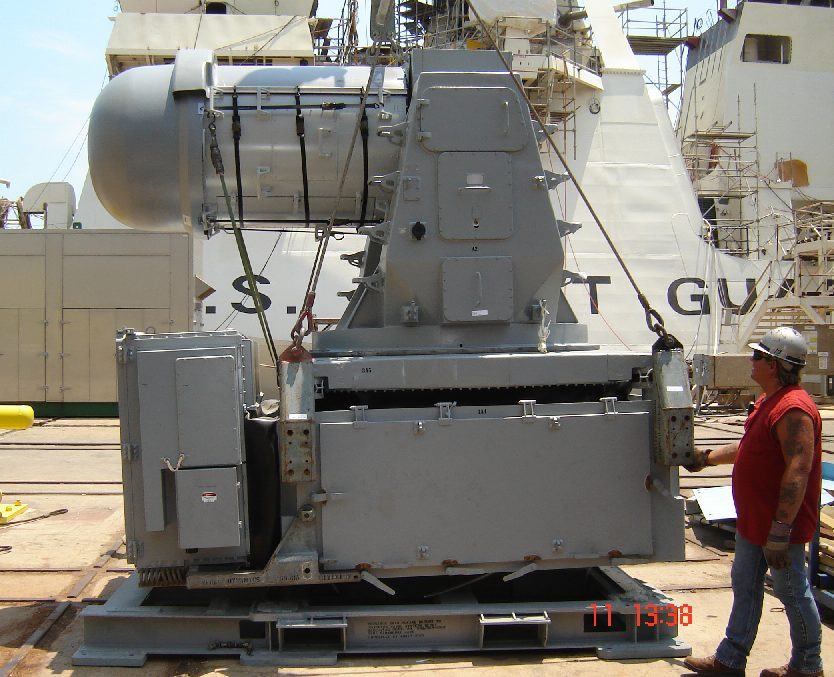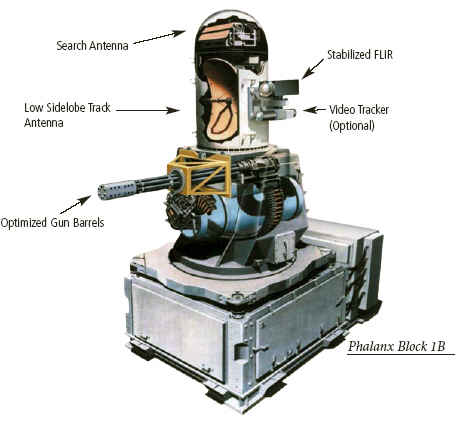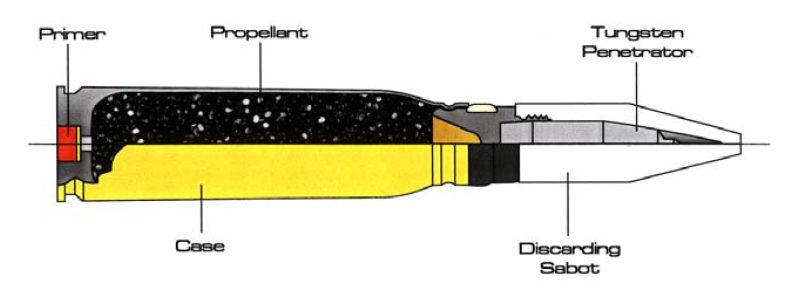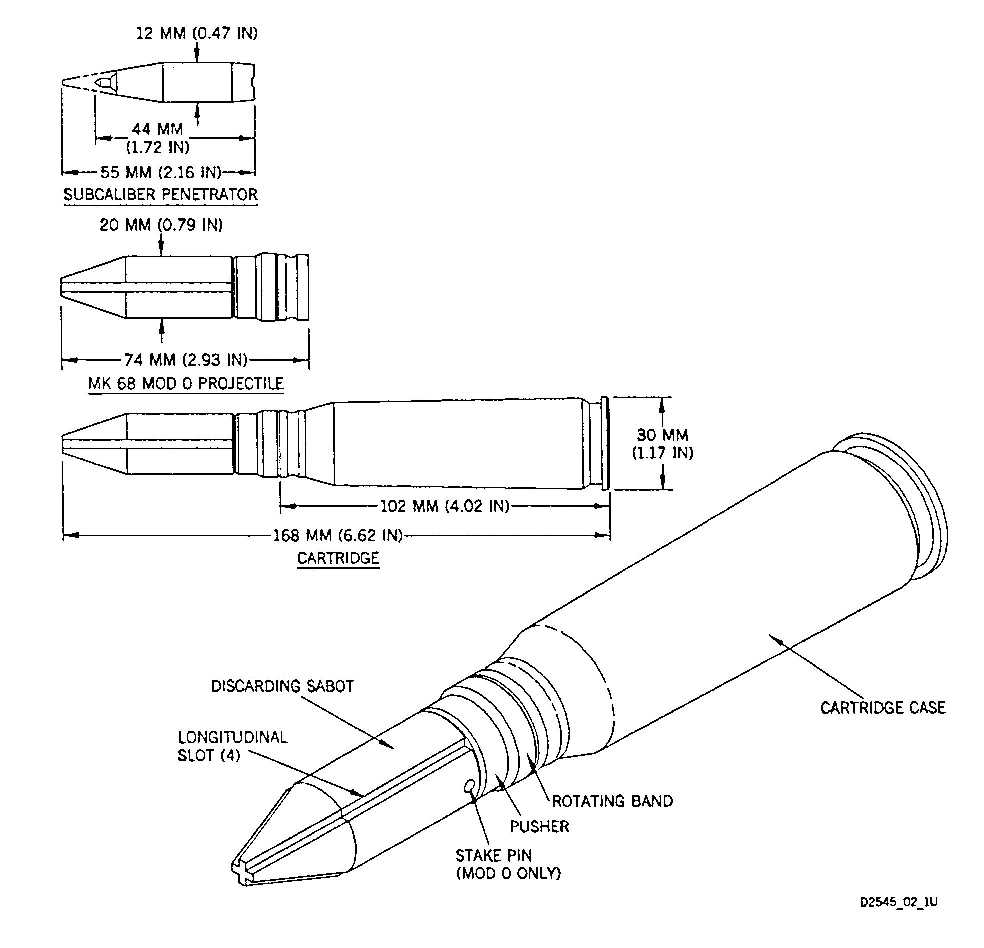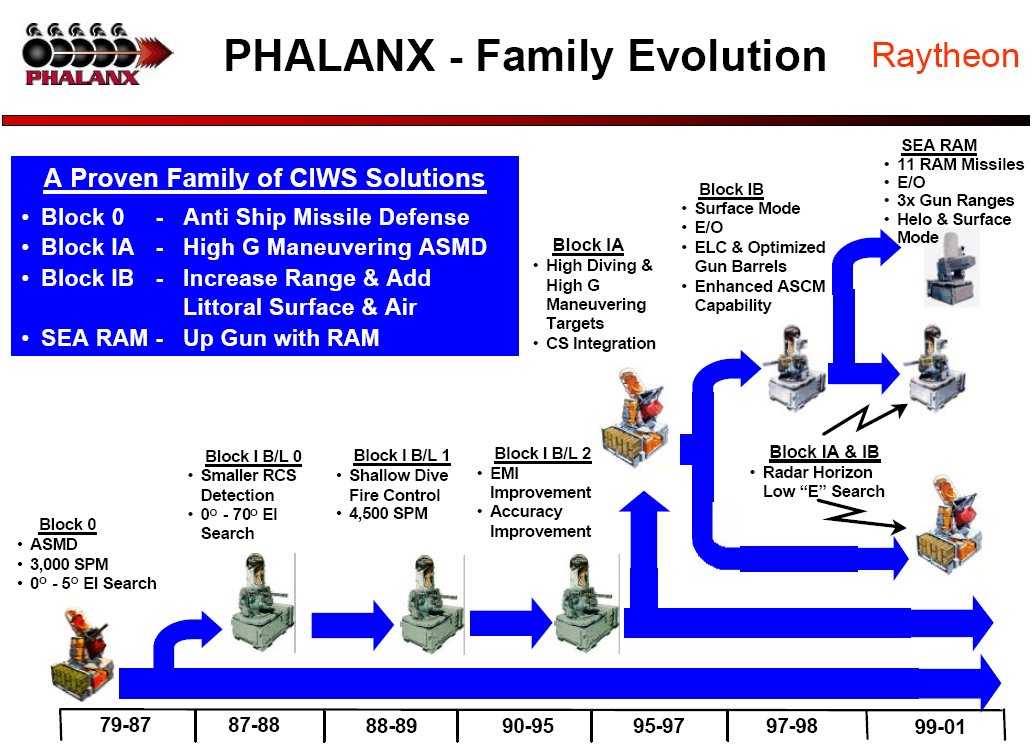Scorpion
THINK TANK: SENIOR
76/62 Super Rapid Multi Feeding (SRMF)

The 76/62 Super Rapid (SR) Gun Mount is a light weight, rapid-fire naval gun providing unrivalled performance and flexibility in any air defence and anti surface role, particularly in anti-missile role.
Capability for very effective engagement of shore based targets is also provided for unique multi-role performance.
The 76/62 SR is suitable for installation on ships of any type and class, including small naval units.
Interface to a large variety of ship's Combat Management System and/or FCS/EOS is provided, according to digital as well as analogical standard, including open architecture.
The Firing rate can be selected from single shot to firing 120 rds/min.
In operational condition the tactical time is less than 3 seconds and the standard deviation at firing is less than 0.3 mrad, thus providing excellent accuracy.
The 76/62 SR (together with the 76/62 Compact) is the only medium caliber naval gun available in the capable of sustained fire, which is a fundamental requirement in any scenario involving the simultaneous engagement of multiple maneuvering target, as requested by the emerging asymmetric warfare scenarios.
Automatic loading is provided through a revolving magazine and rapid reloading is easily undertaken even during firing action by two ammunition handlers.
Standard supply includes the new Digital Control Console (DCC) capitalizing the digital technology to increase the functions available to the operator and to the maintainers.
The 76/62 SR is ready for operating the OTO Melara 3AP Multifunction Programmable Fuse.
The in service and new 76/62 SR, have the necessary flexibility for being fitted with optional:




The 76/62 Super Rapid (SR) Gun Mount is a light weight, rapid-fire naval gun providing unrivalled performance and flexibility in any air defence and anti surface role, particularly in anti-missile role.
Capability for very effective engagement of shore based targets is also provided for unique multi-role performance.
The 76/62 SR is suitable for installation on ships of any type and class, including small naval units.
Interface to a large variety of ship's Combat Management System and/or FCS/EOS is provided, according to digital as well as analogical standard, including open architecture.
The Firing rate can be selected from single shot to firing 120 rds/min.
In operational condition the tactical time is less than 3 seconds and the standard deviation at firing is less than 0.3 mrad, thus providing excellent accuracy.
The 76/62 SR (together with the 76/62 Compact) is the only medium caliber naval gun available in the capable of sustained fire, which is a fundamental requirement in any scenario involving the simultaneous engagement of multiple maneuvering target, as requested by the emerging asymmetric warfare scenarios.
Automatic loading is provided through a revolving magazine and rapid reloading is easily undertaken even during firing action by two ammunition handlers.
Standard supply includes the new Digital Control Console (DCC) capitalizing the digital technology to increase the functions available to the operator and to the maintainers.
The 76/62 SR is ready for operating the OTO Melara 3AP Multifunction Programmable Fuse.
The in service and new 76/62 SR, have the necessary flexibility for being fitted with optional:
- Integral Stealth Shield to reduce the total RCS of the ship
- Muzzle Velocity Radar to update the FCS of eventual deviations from range table values
- Multi Feeding Device for the automatic handling, selection and feeding of any type of ammunition loaded
- STRALES system – a guidance system for the DART guided projectile.


